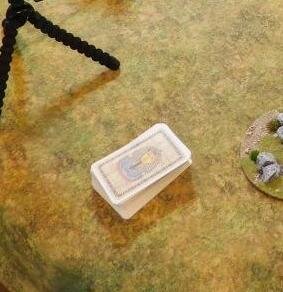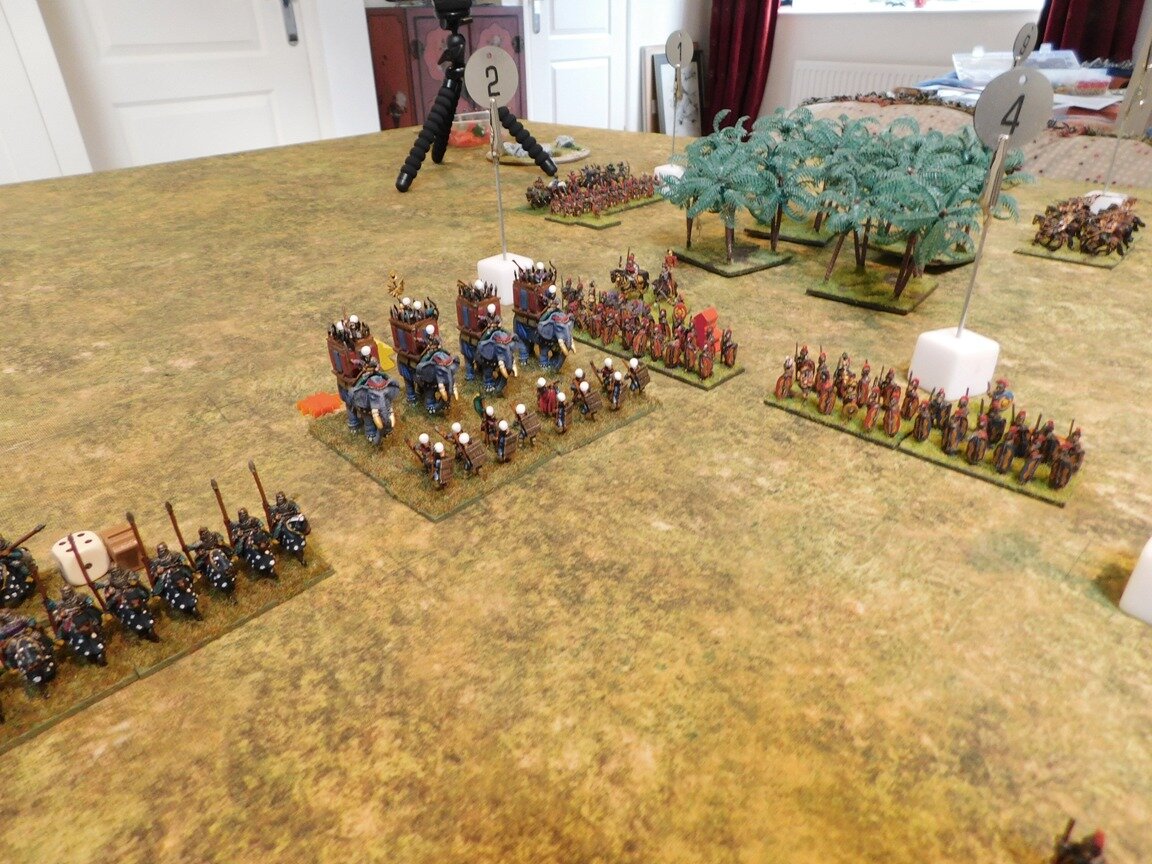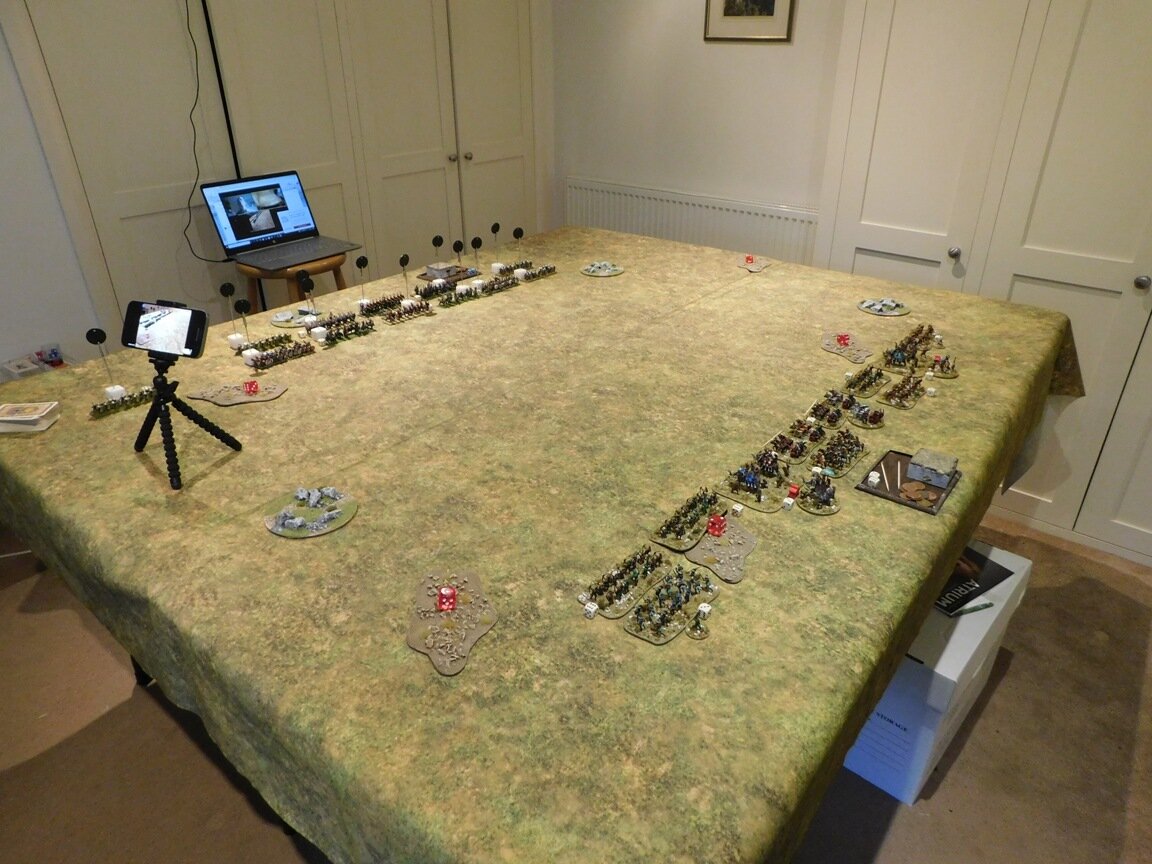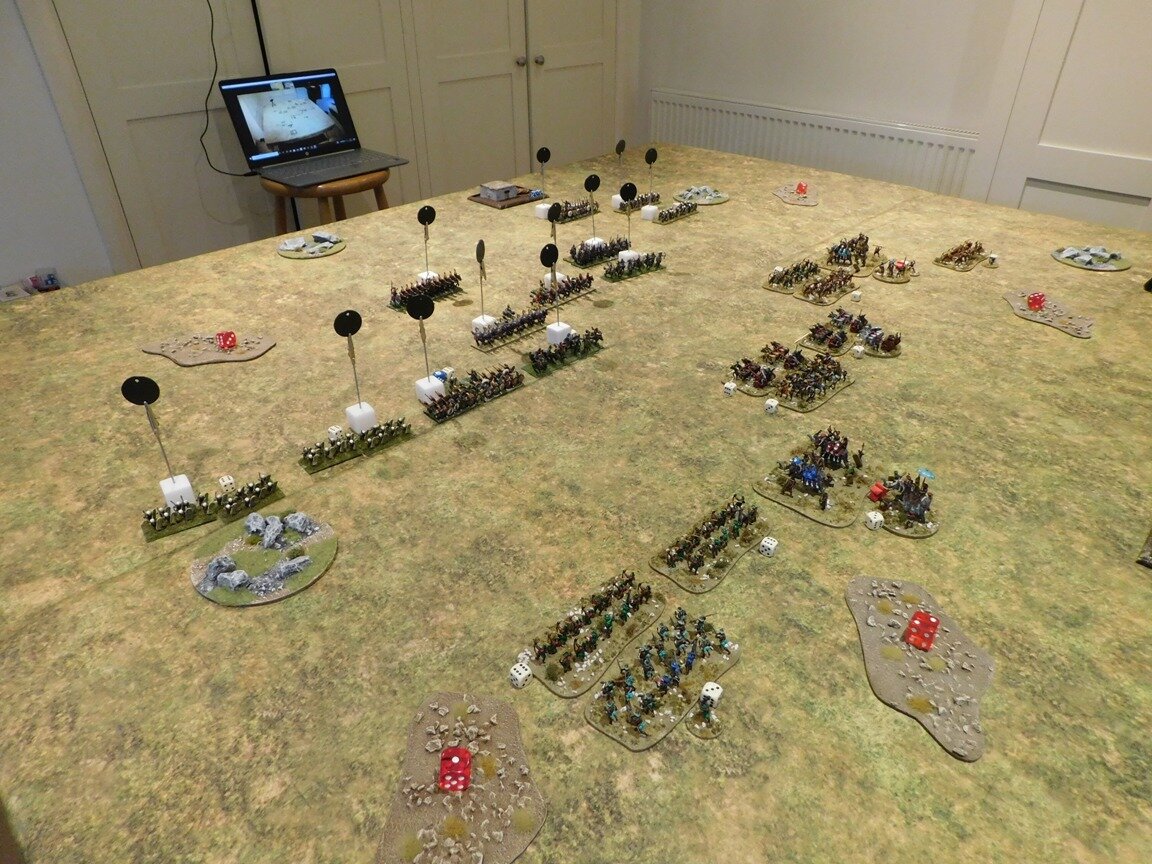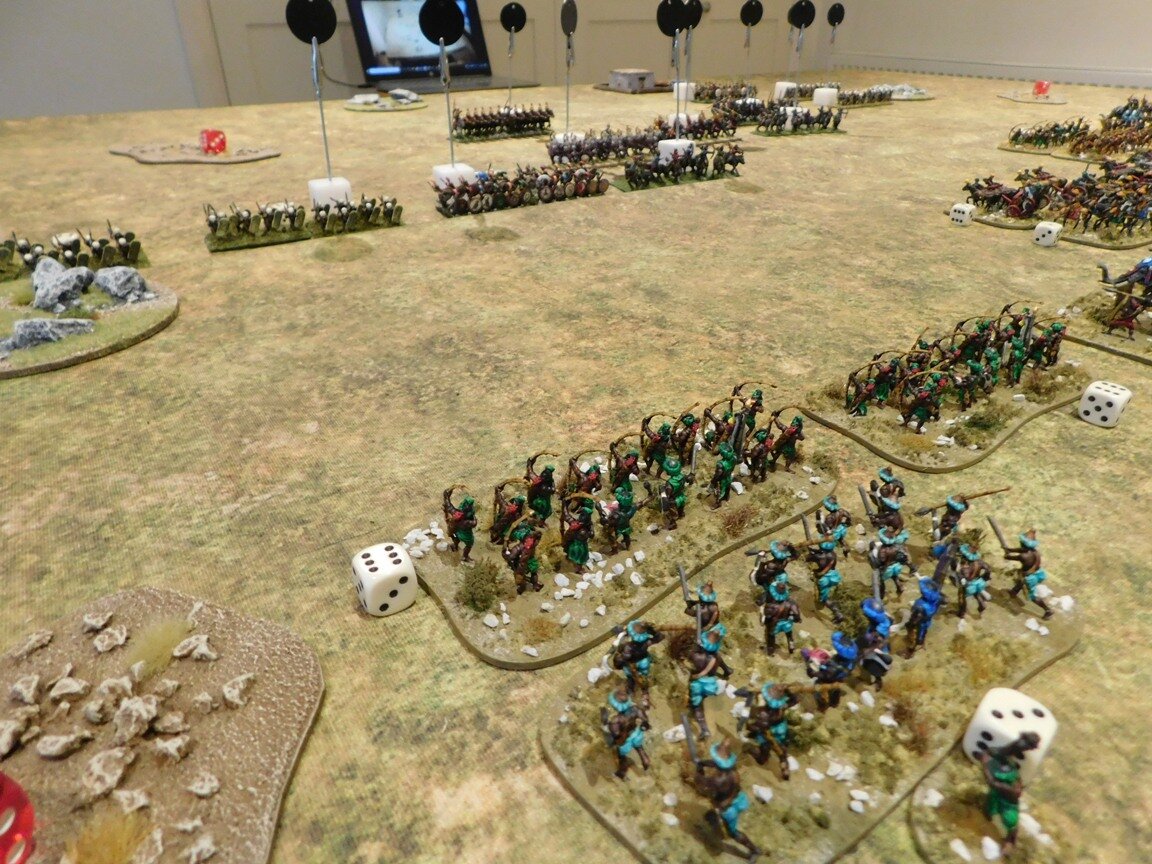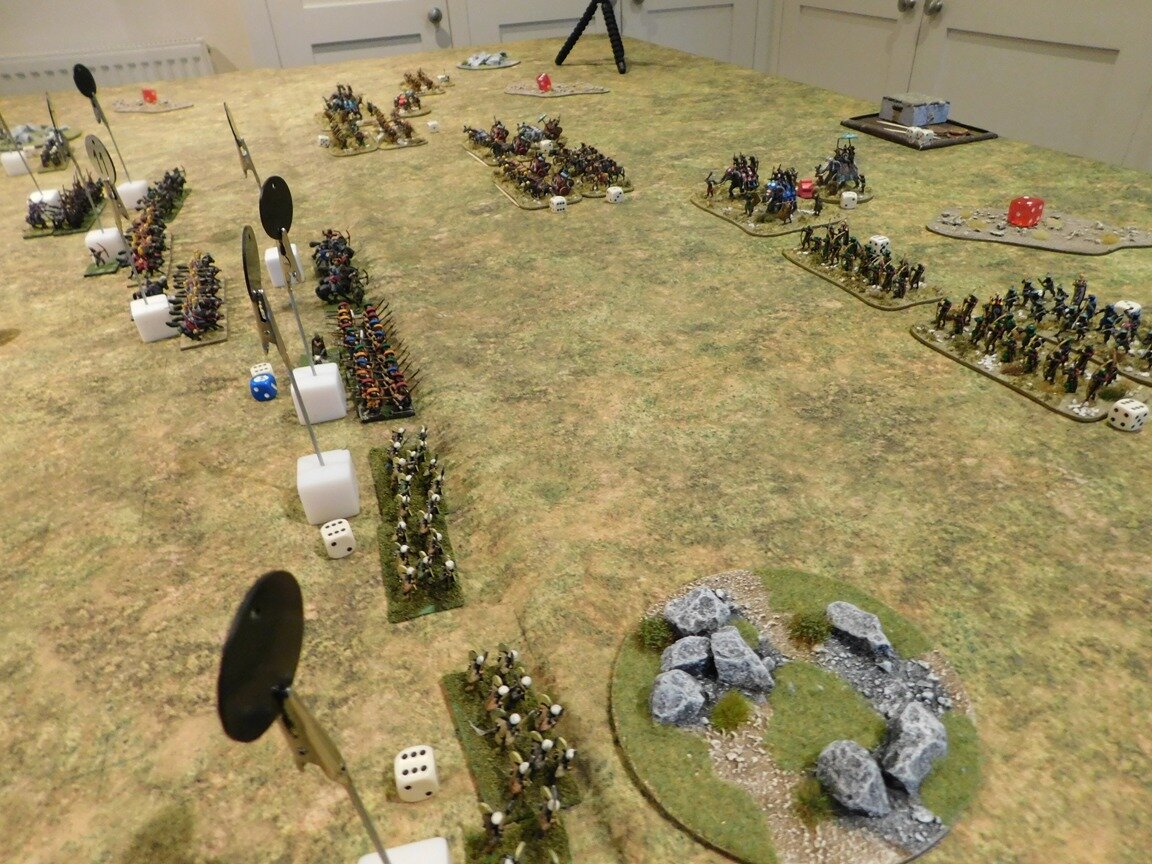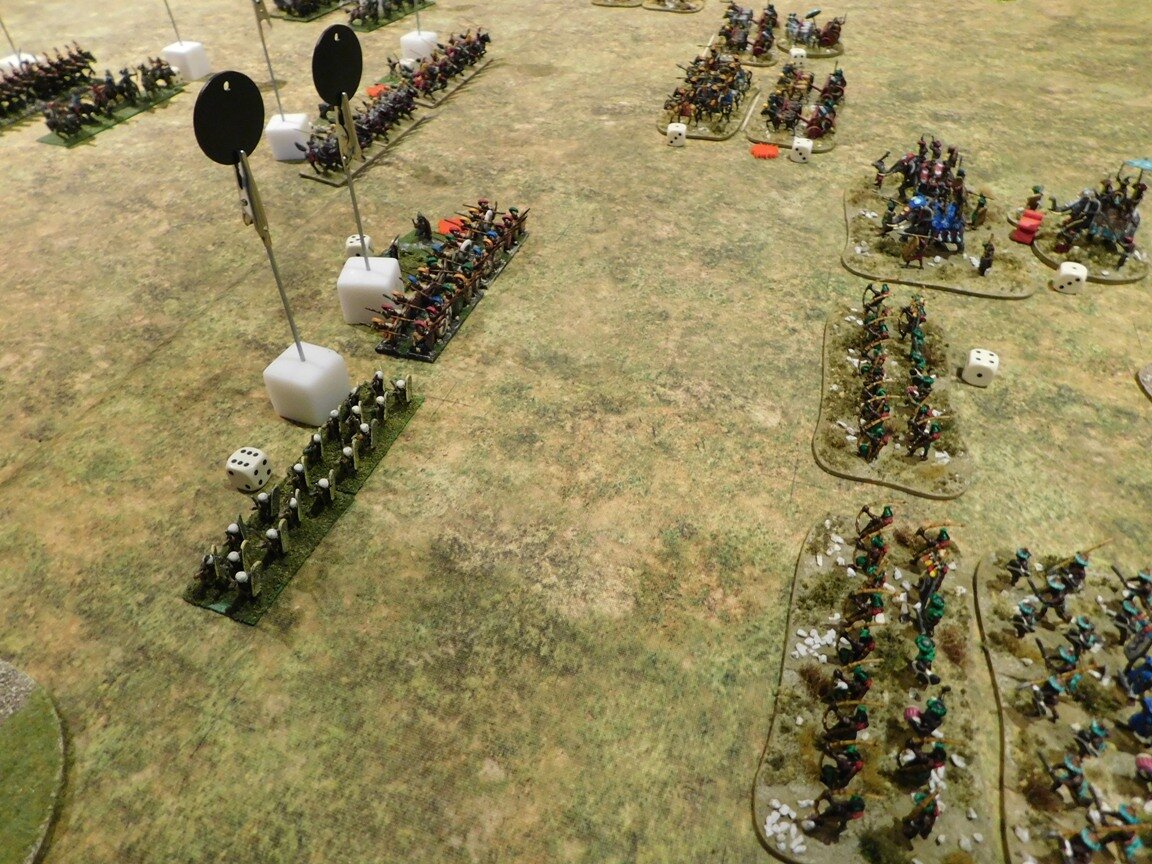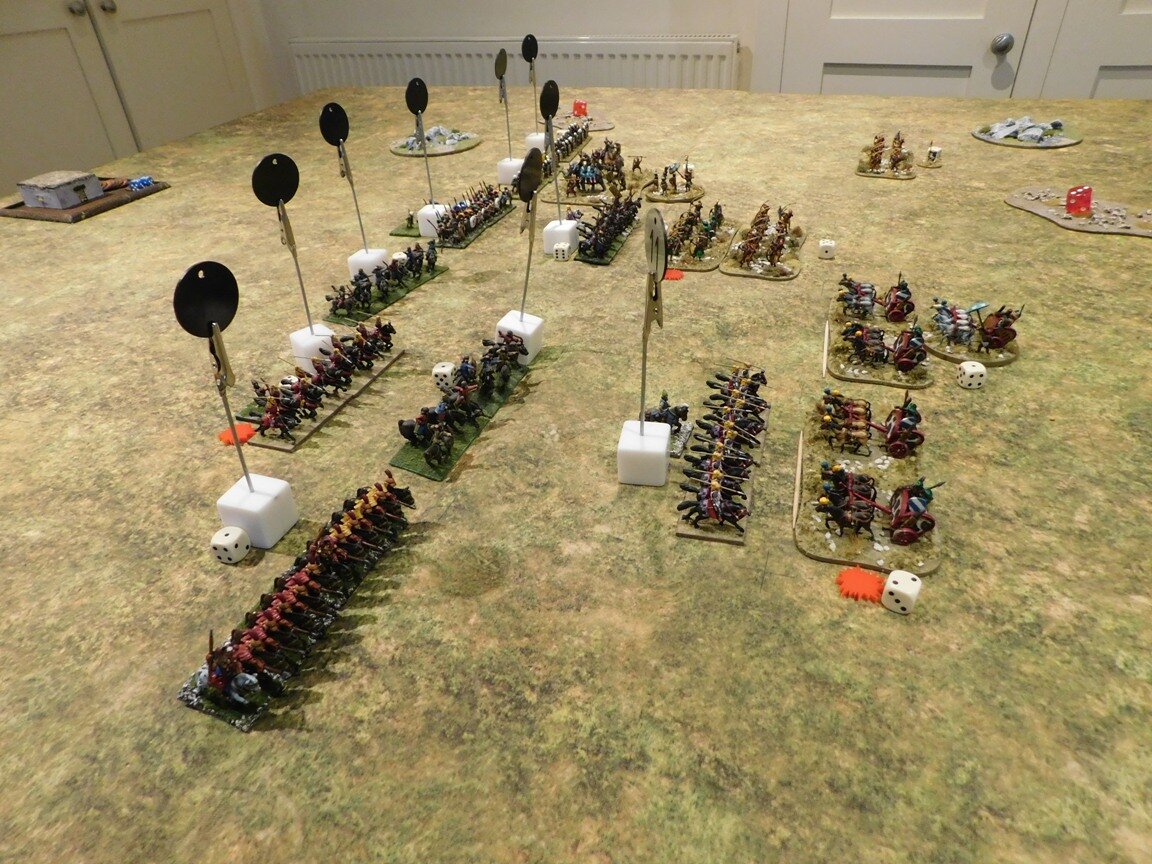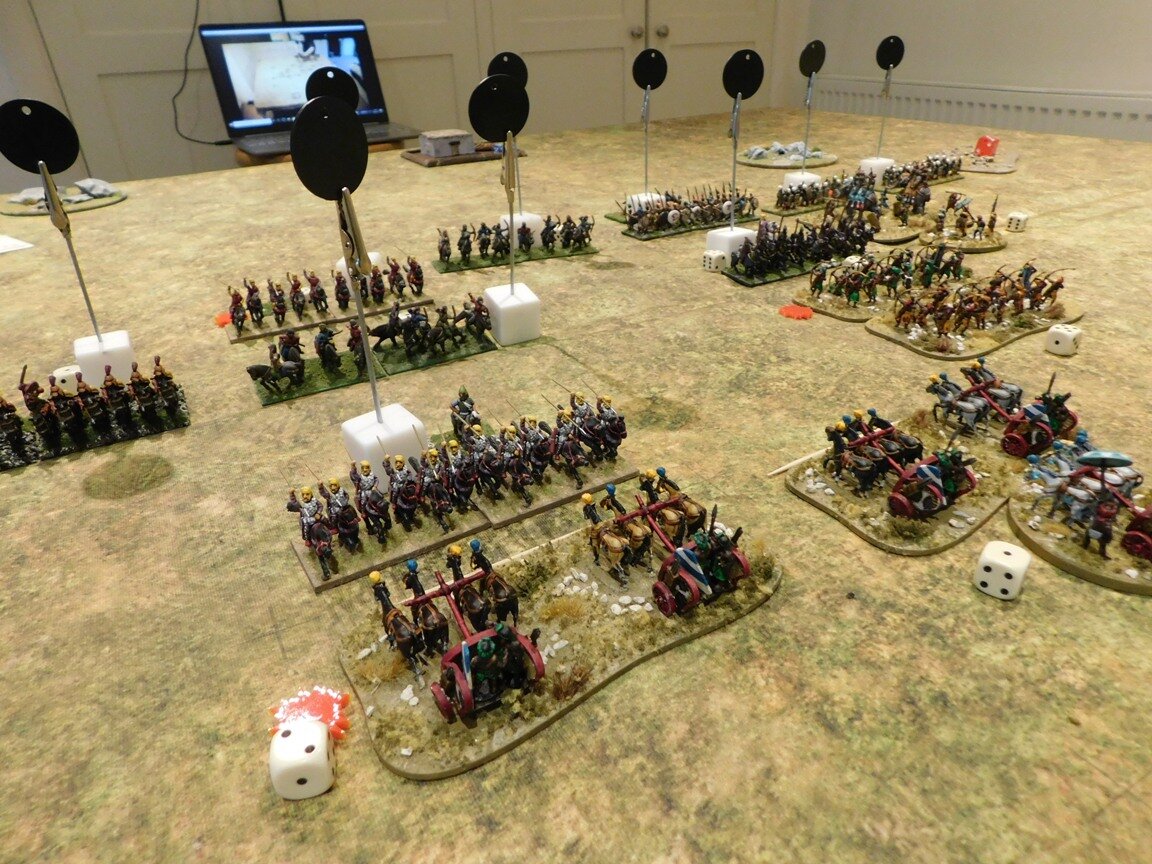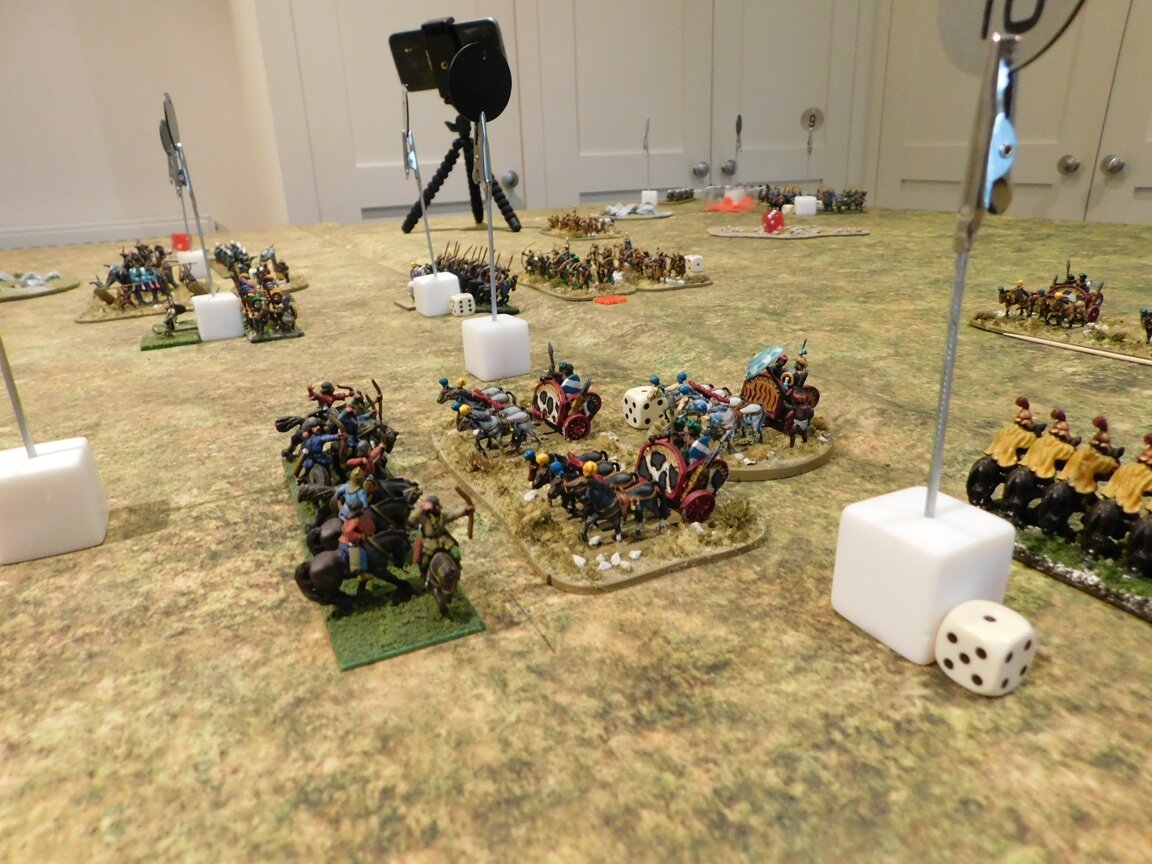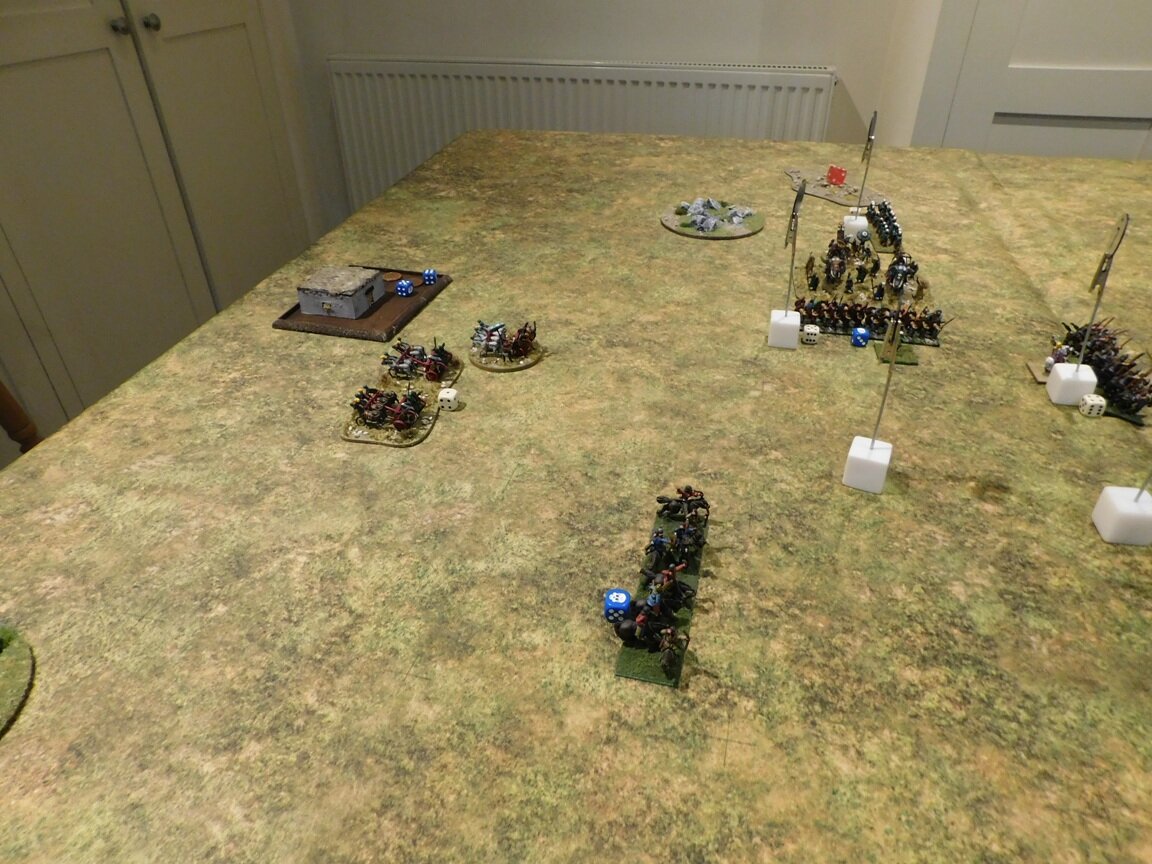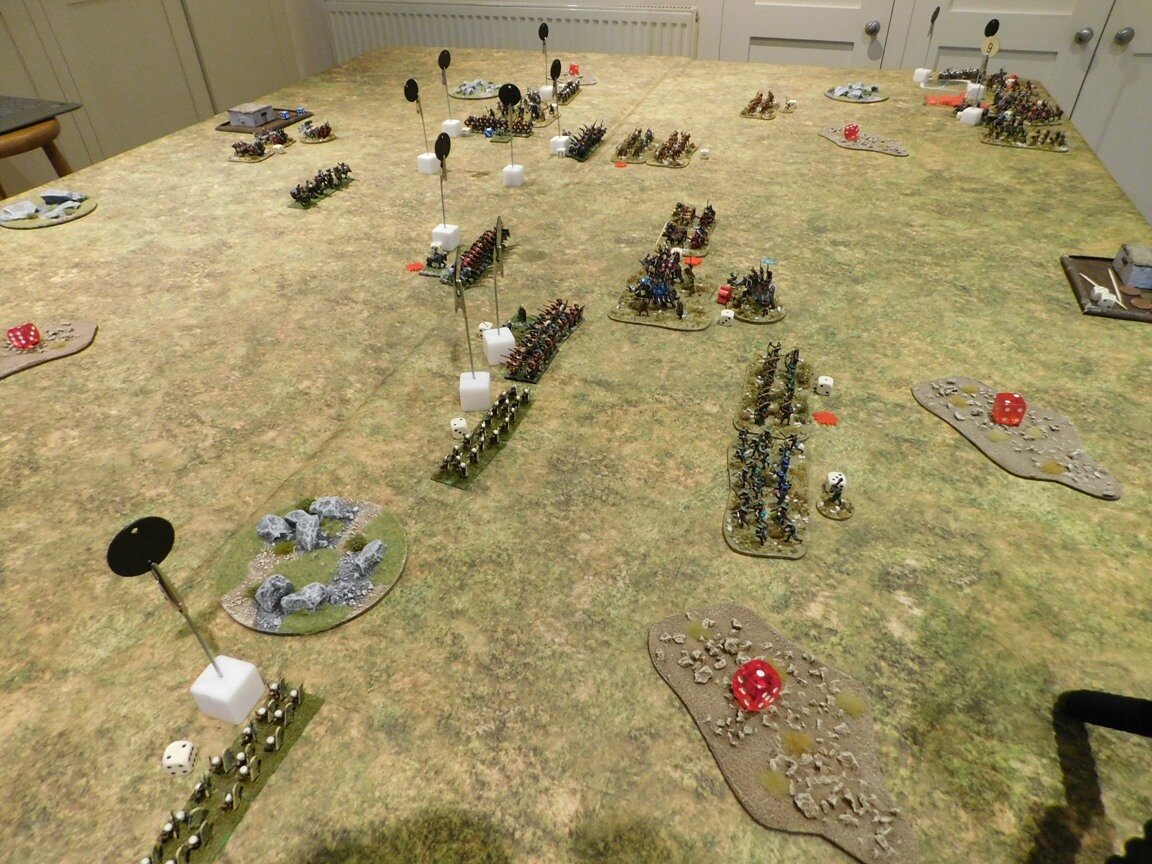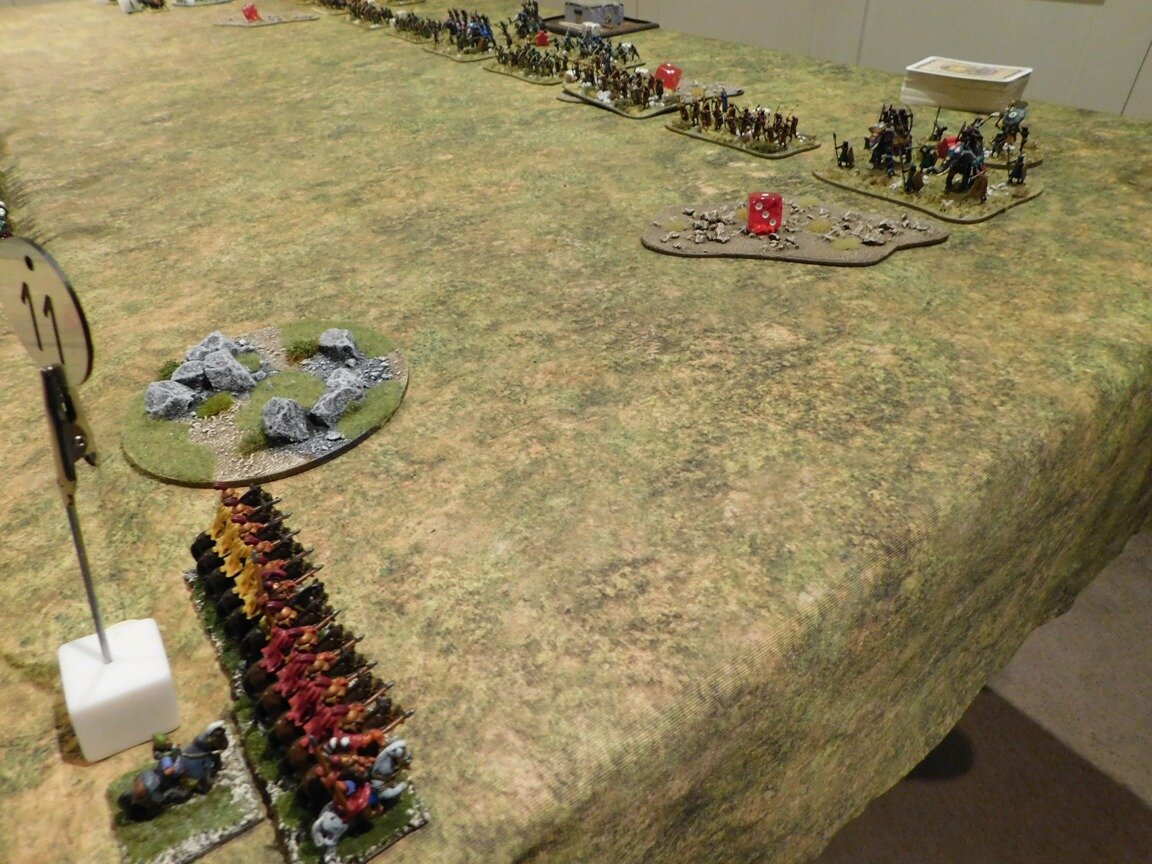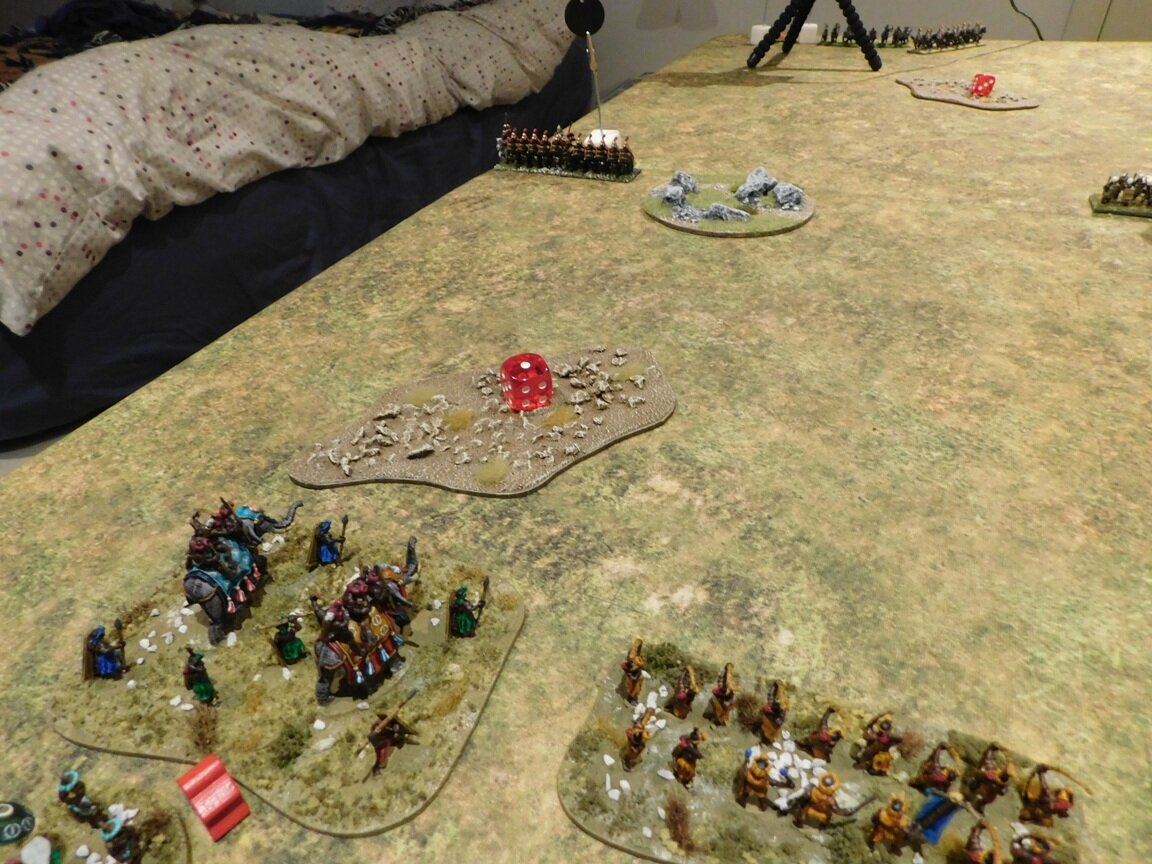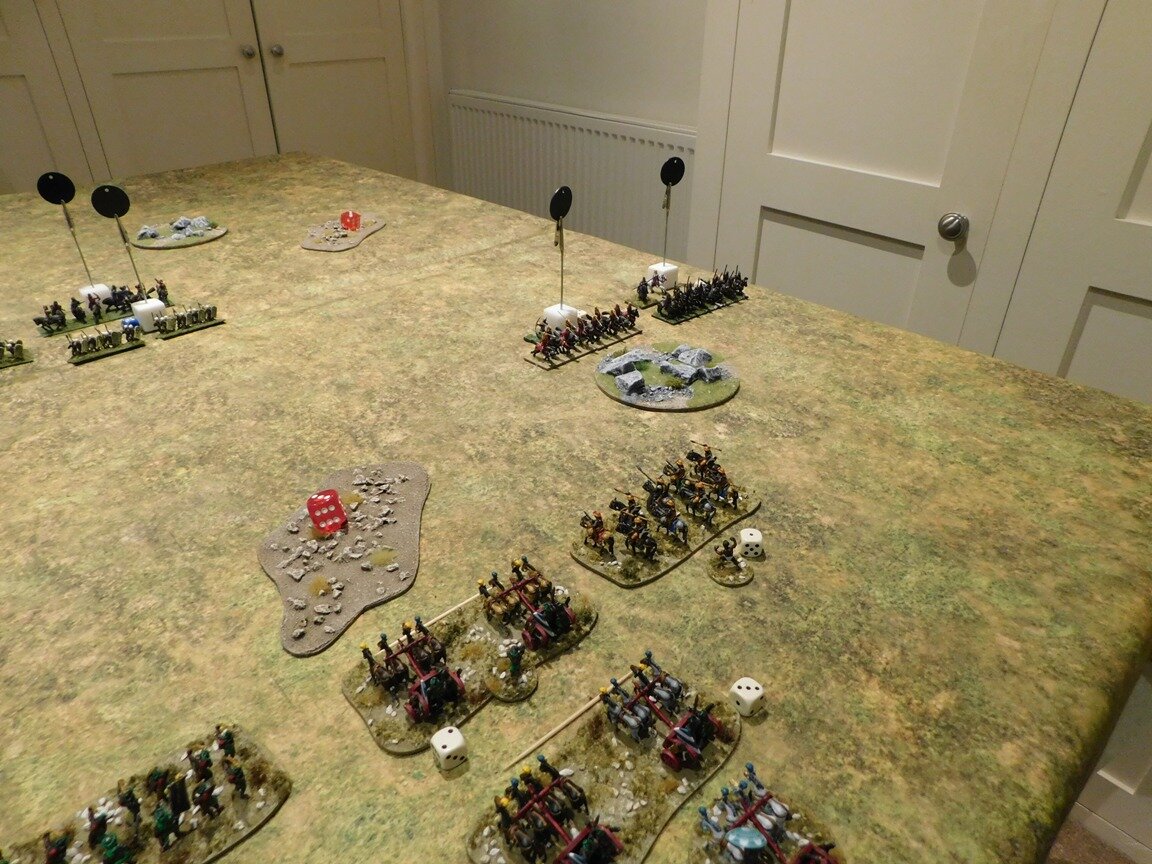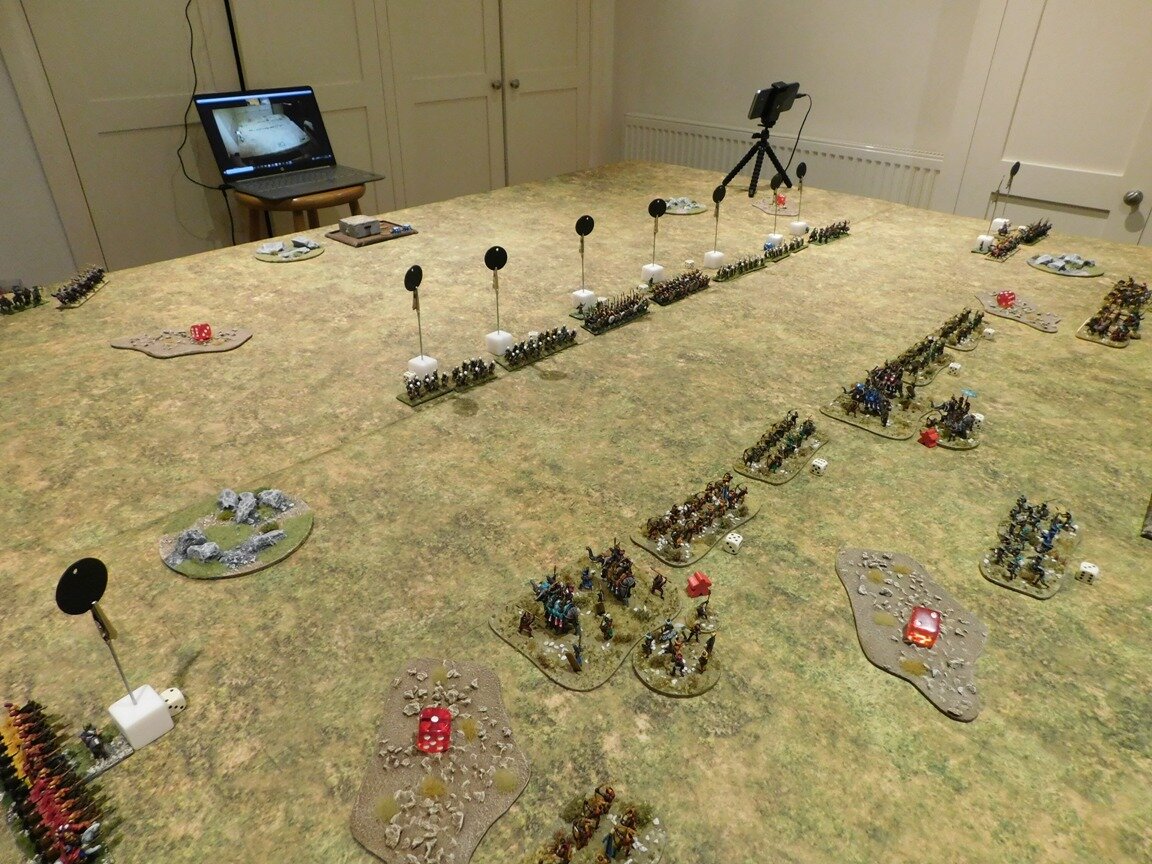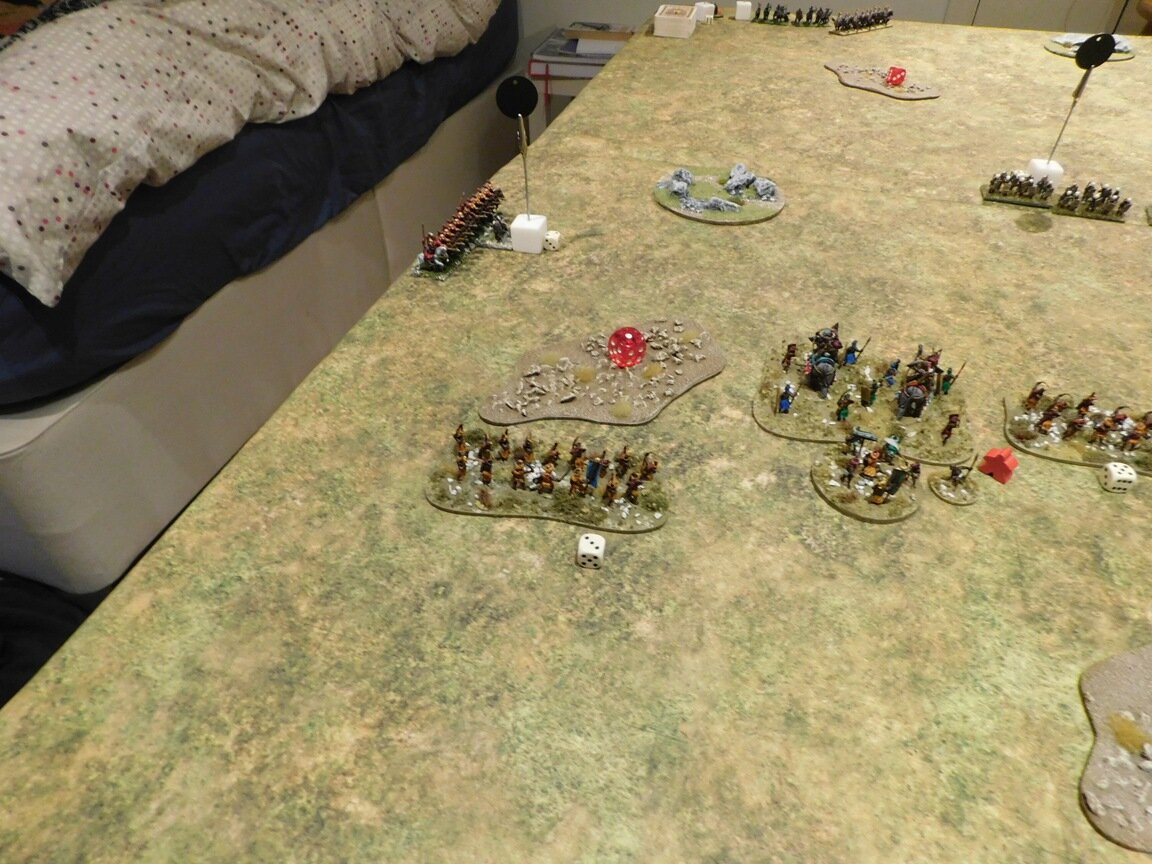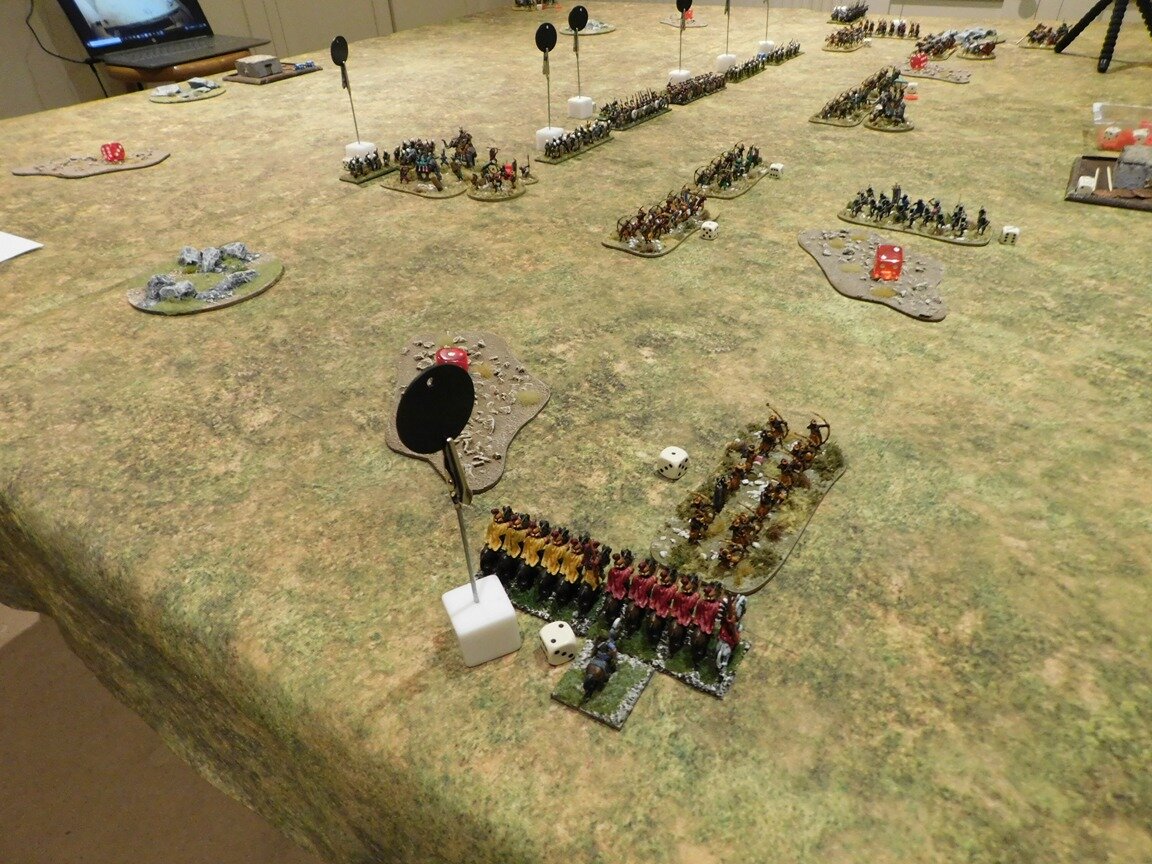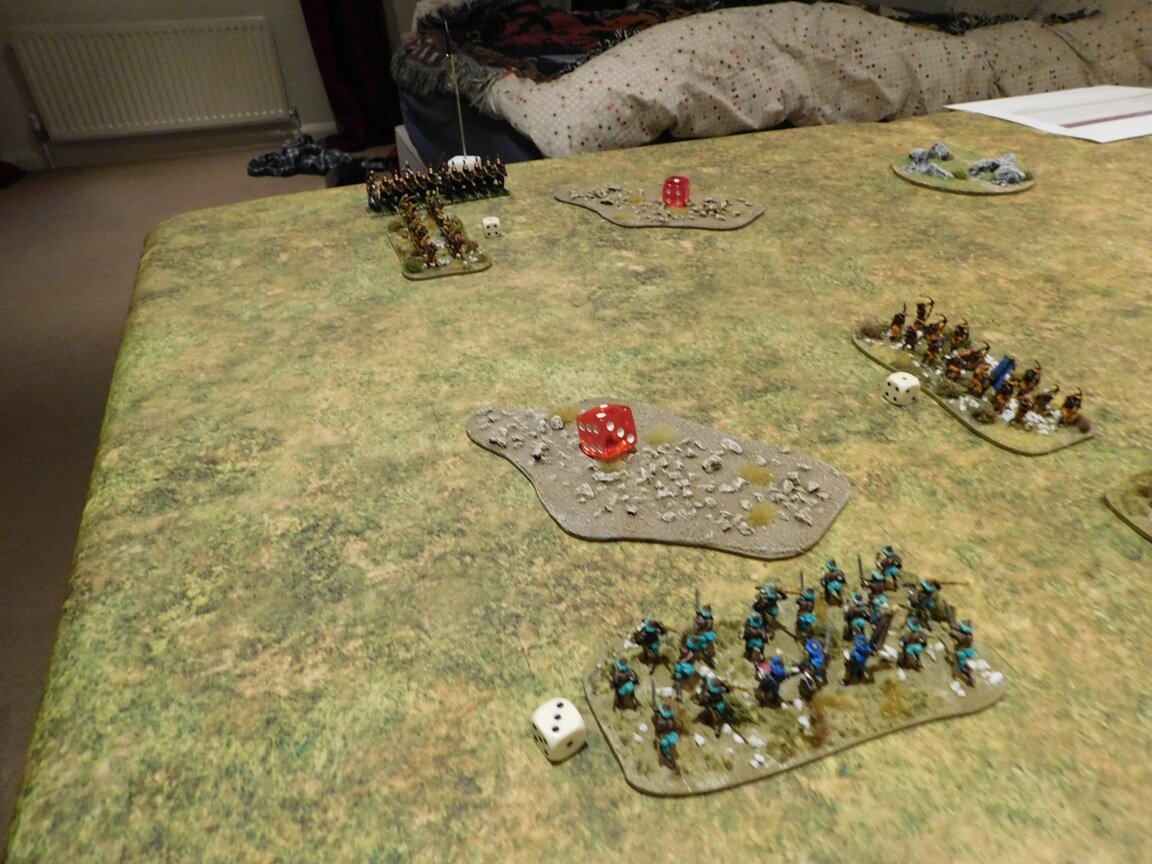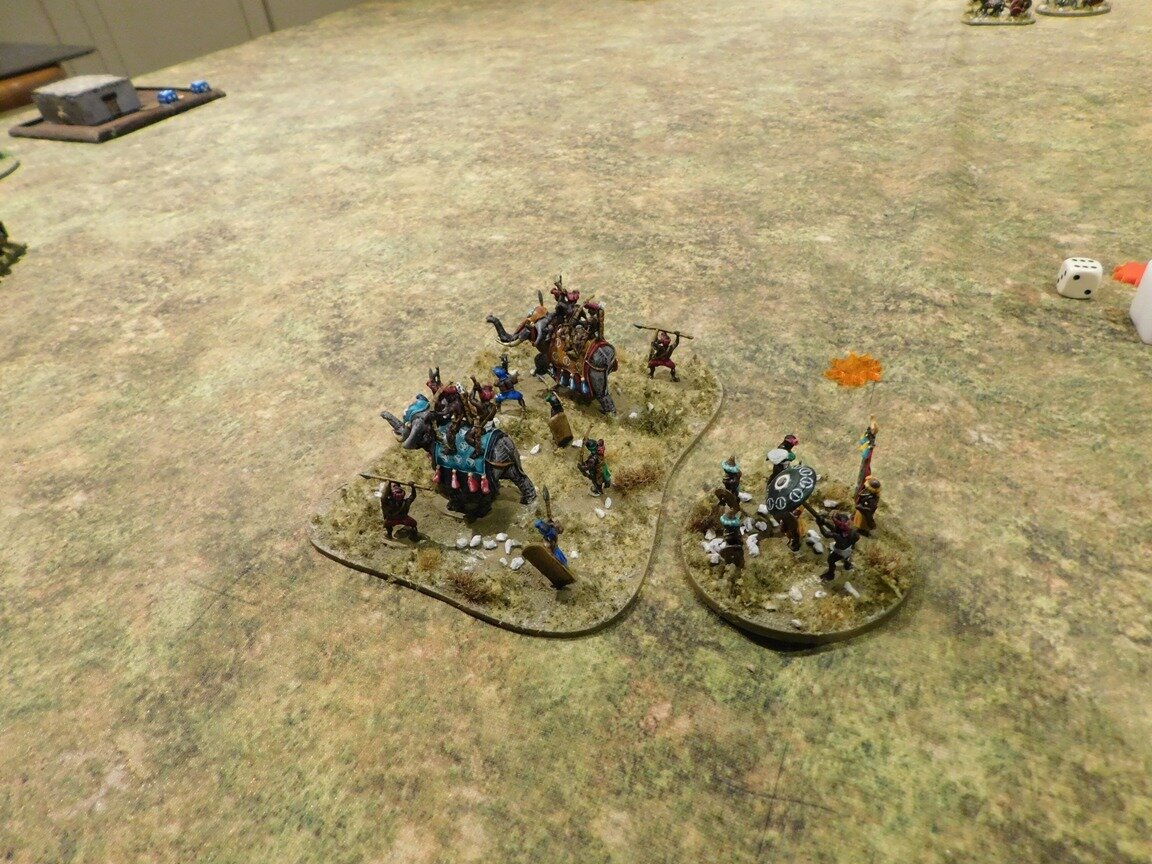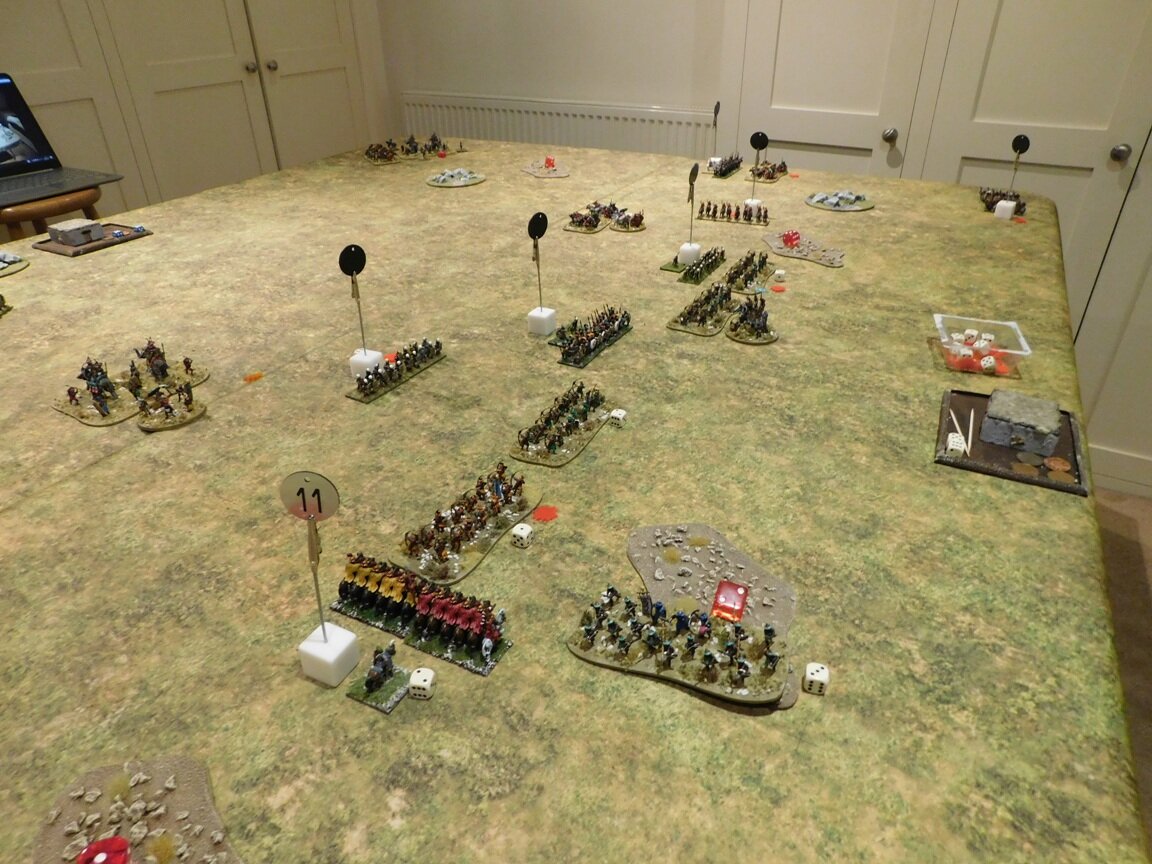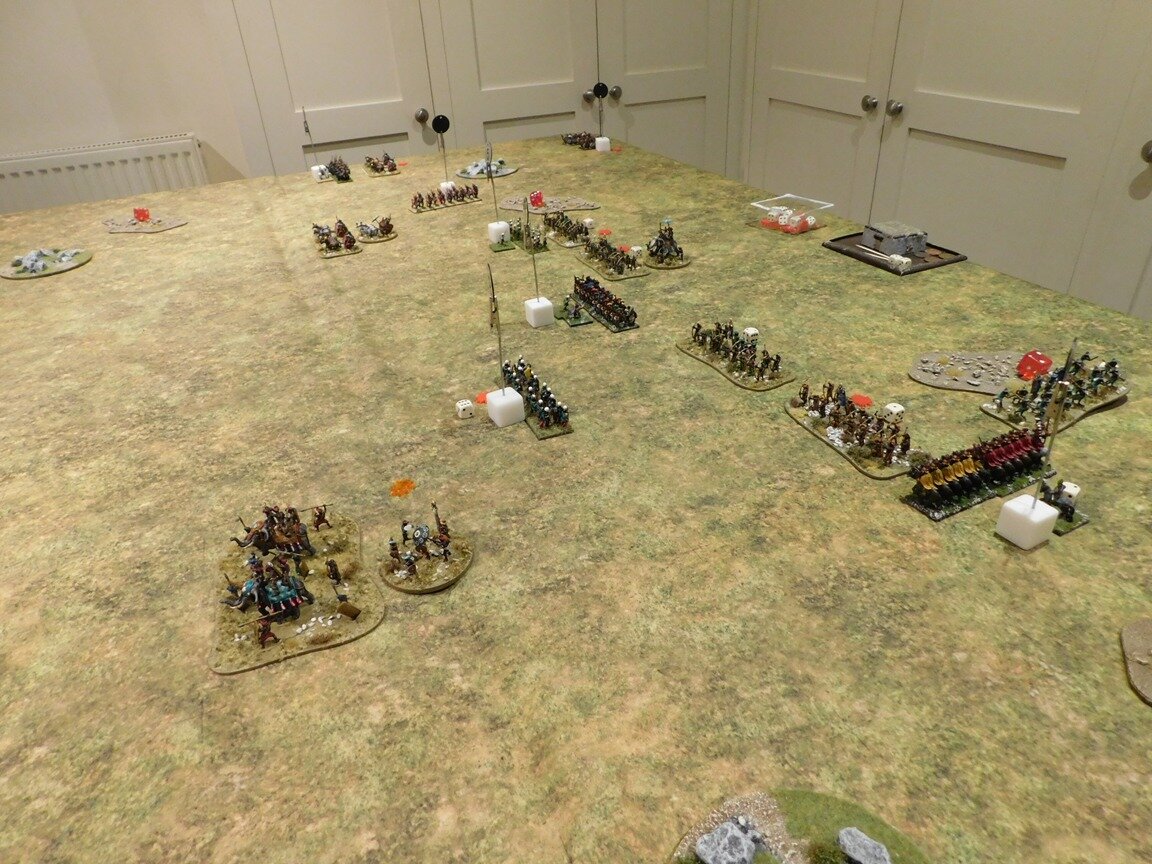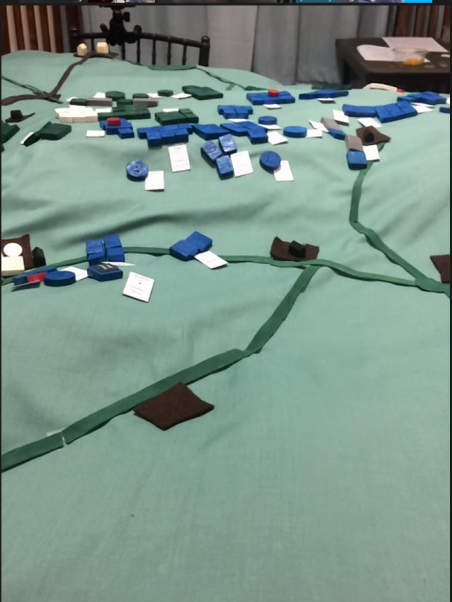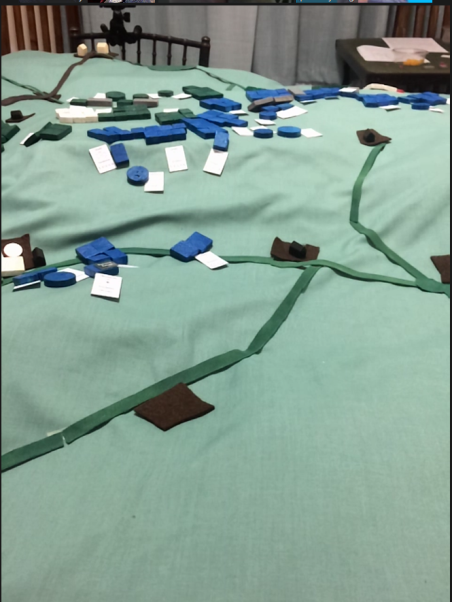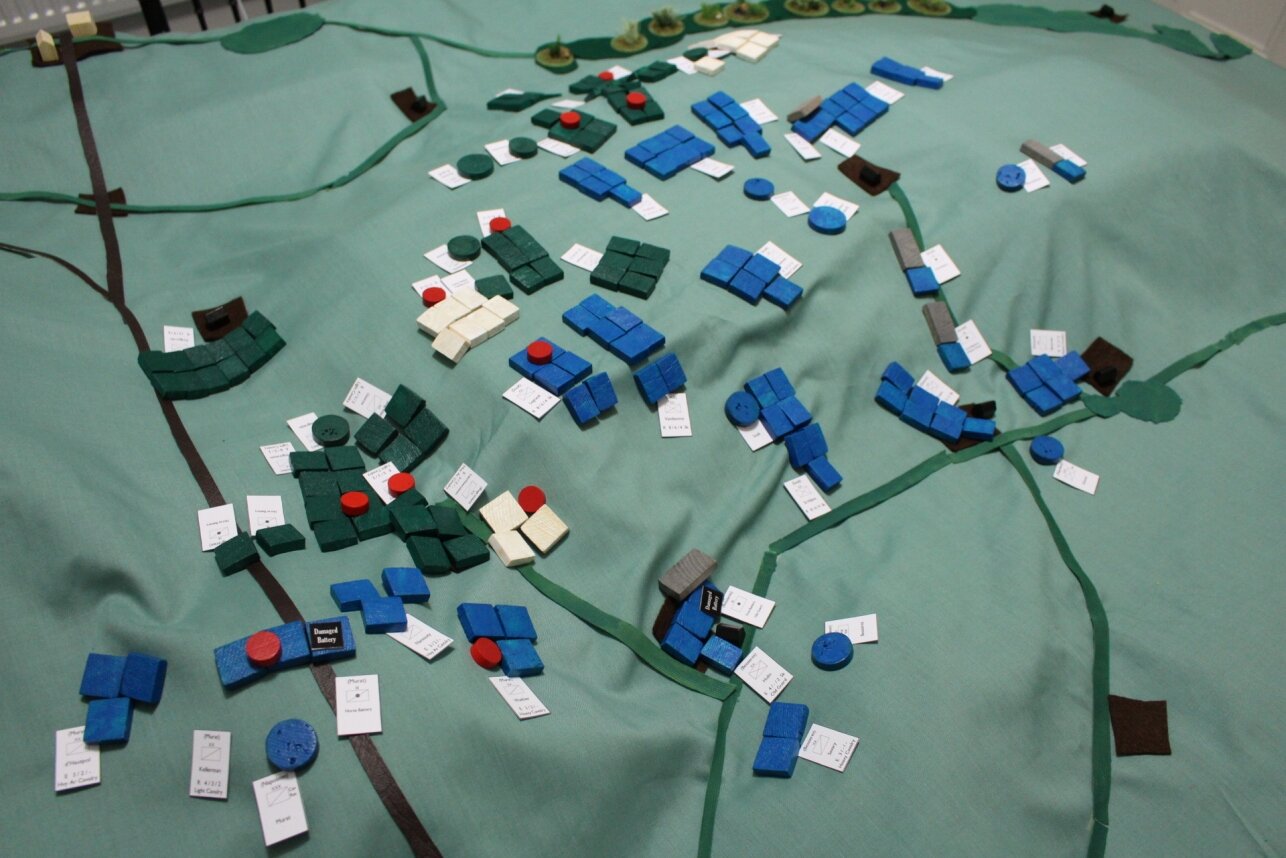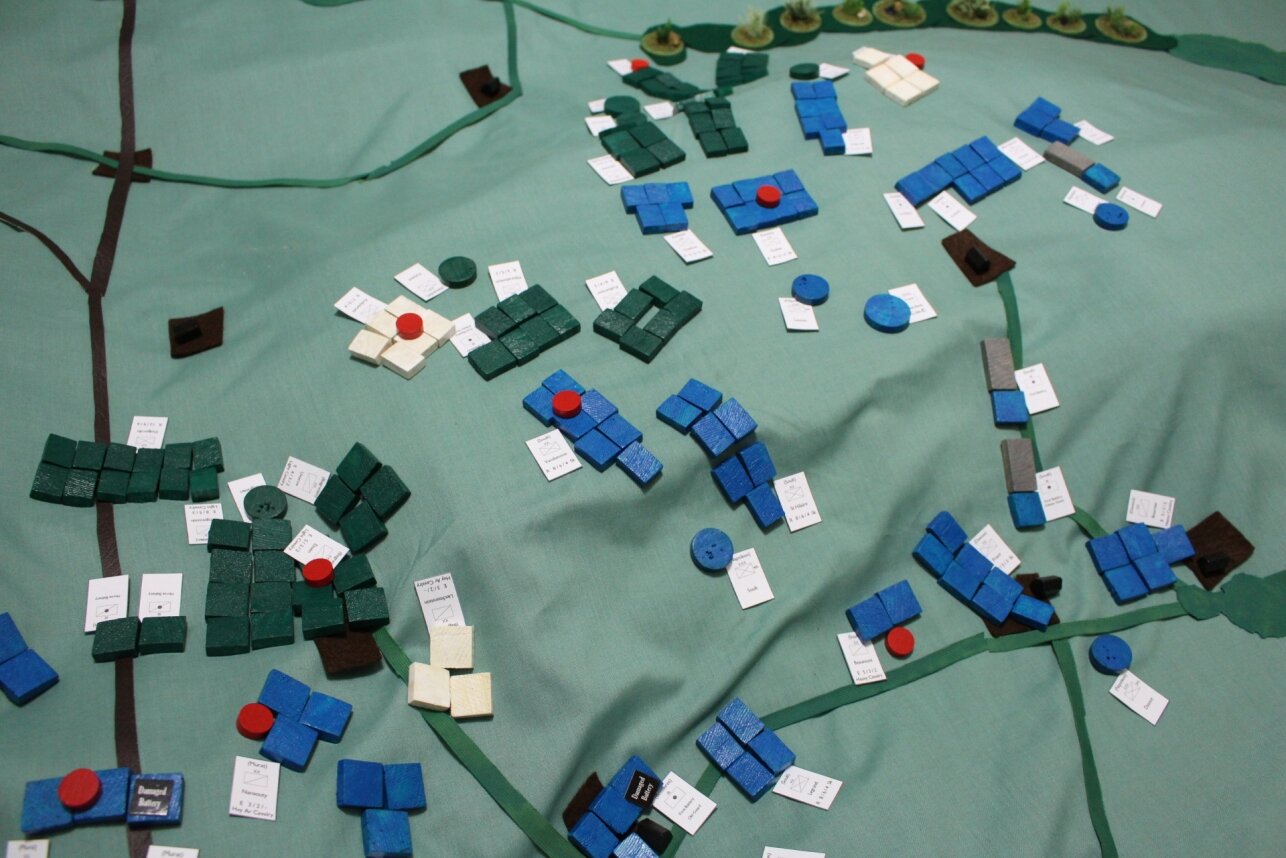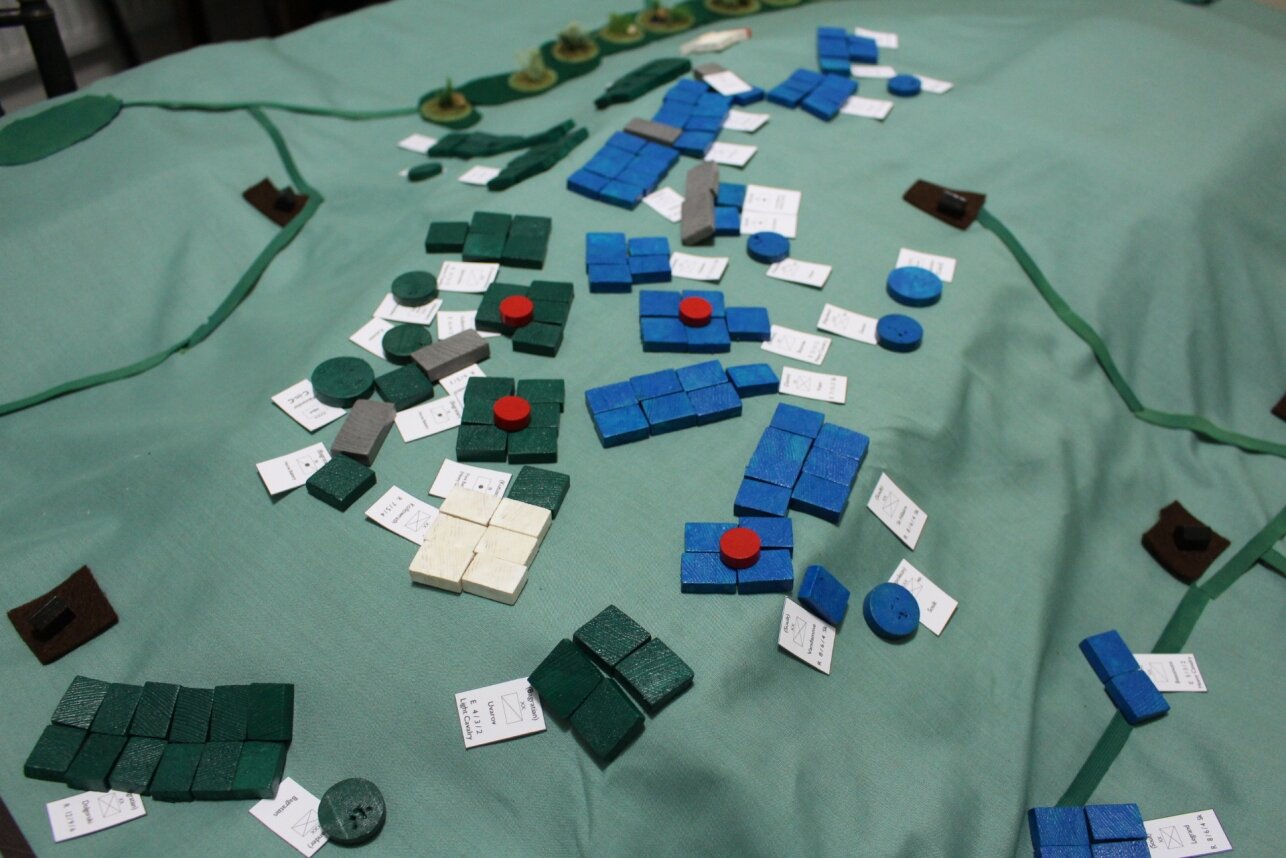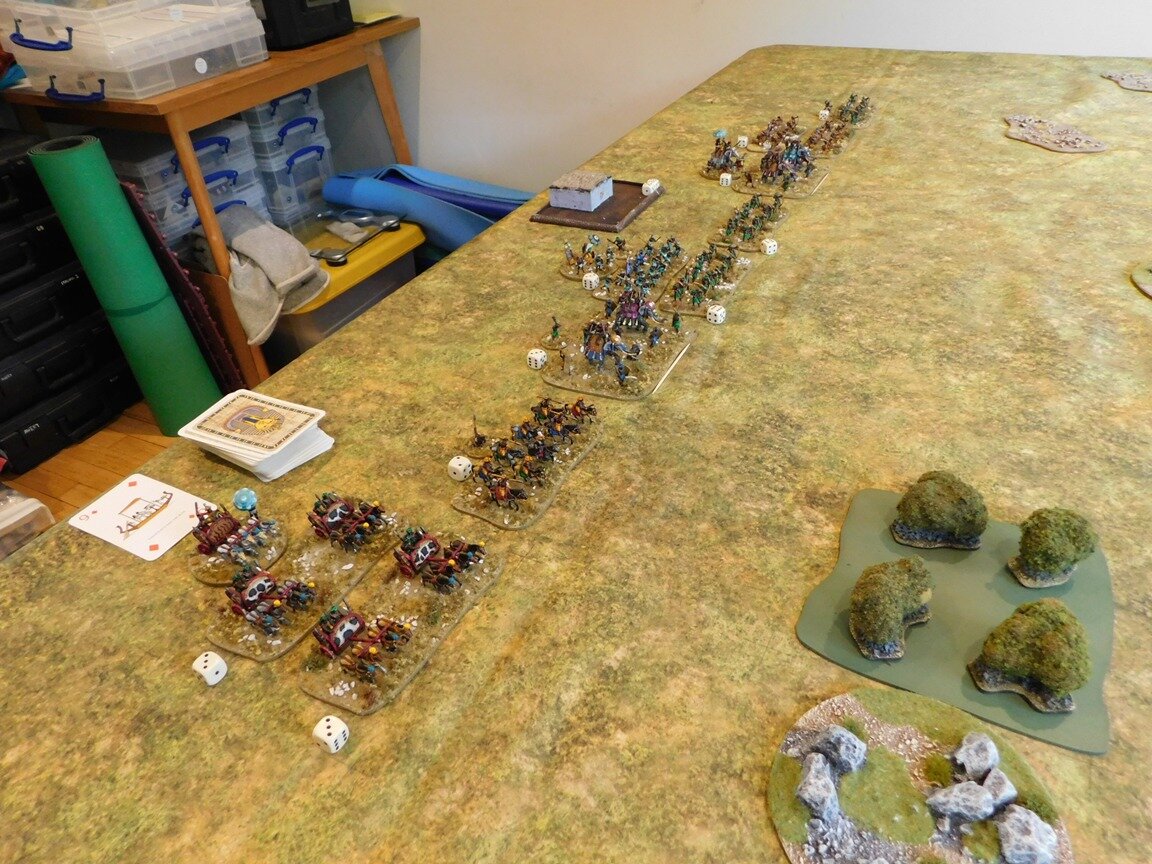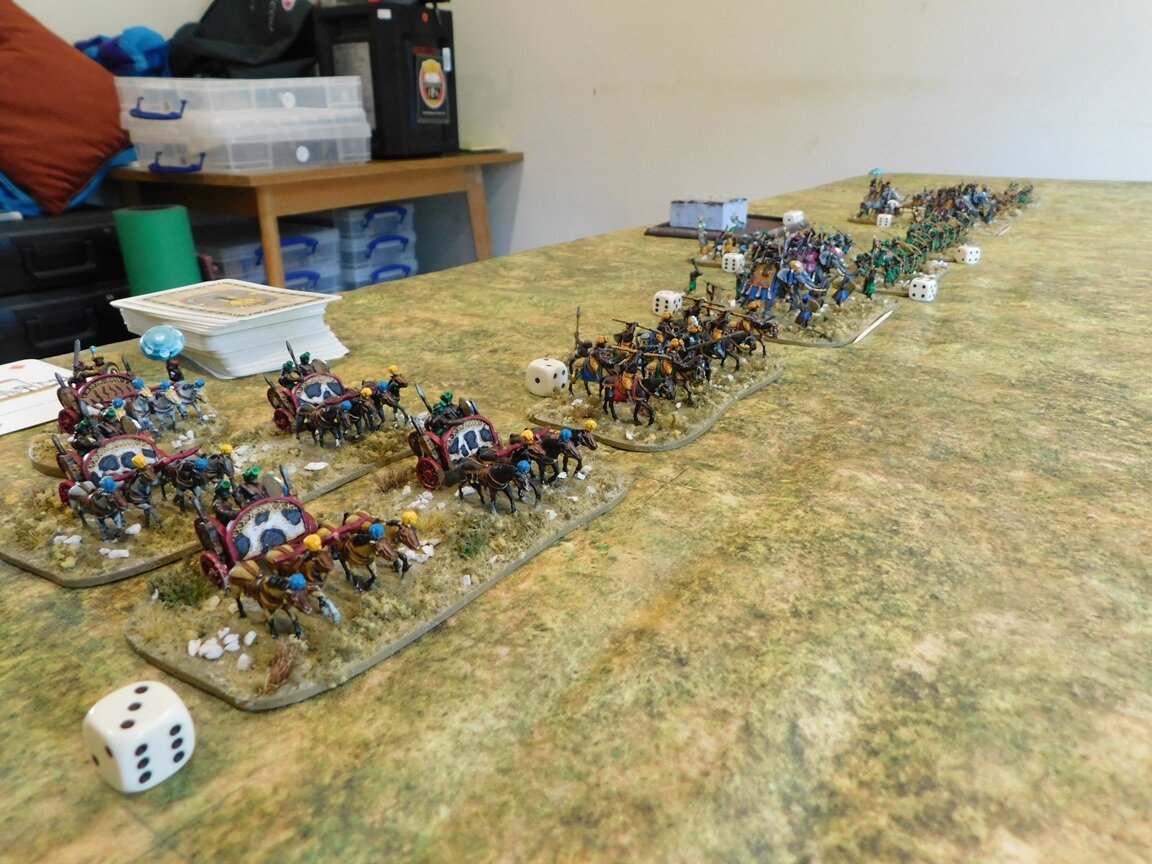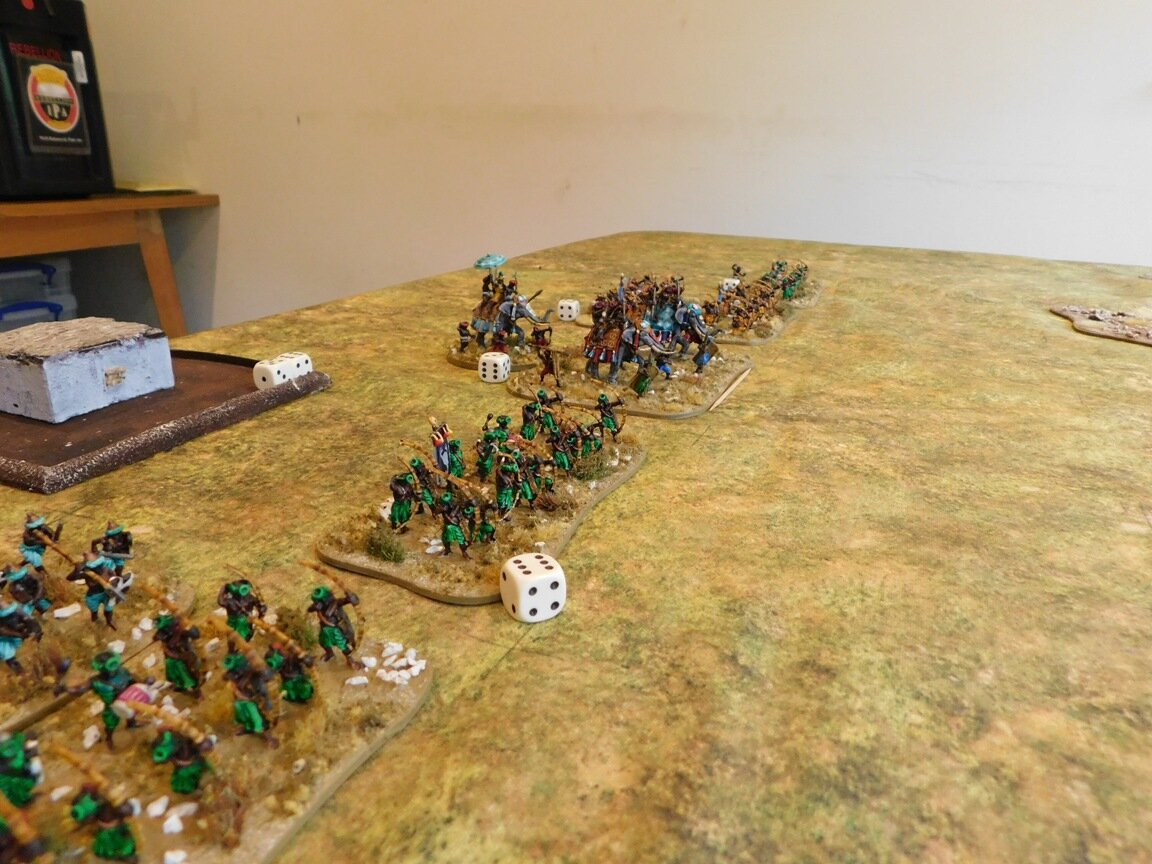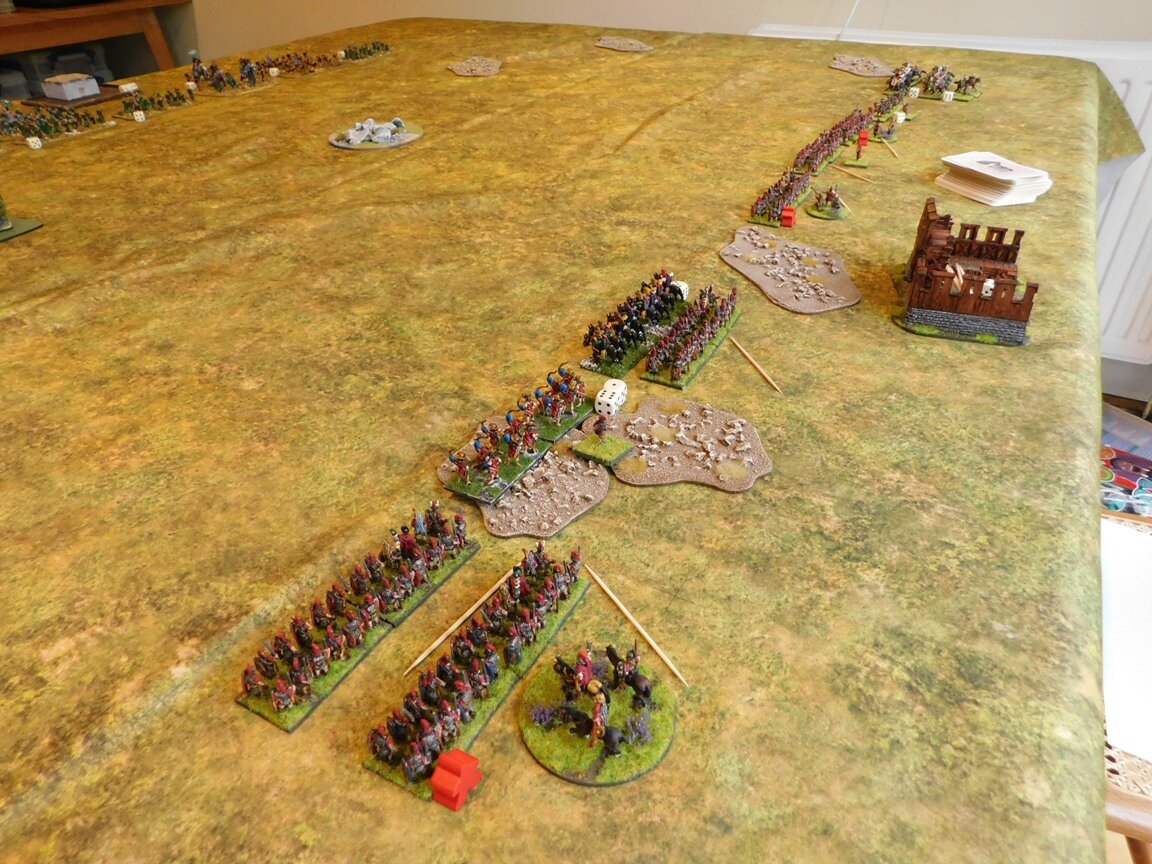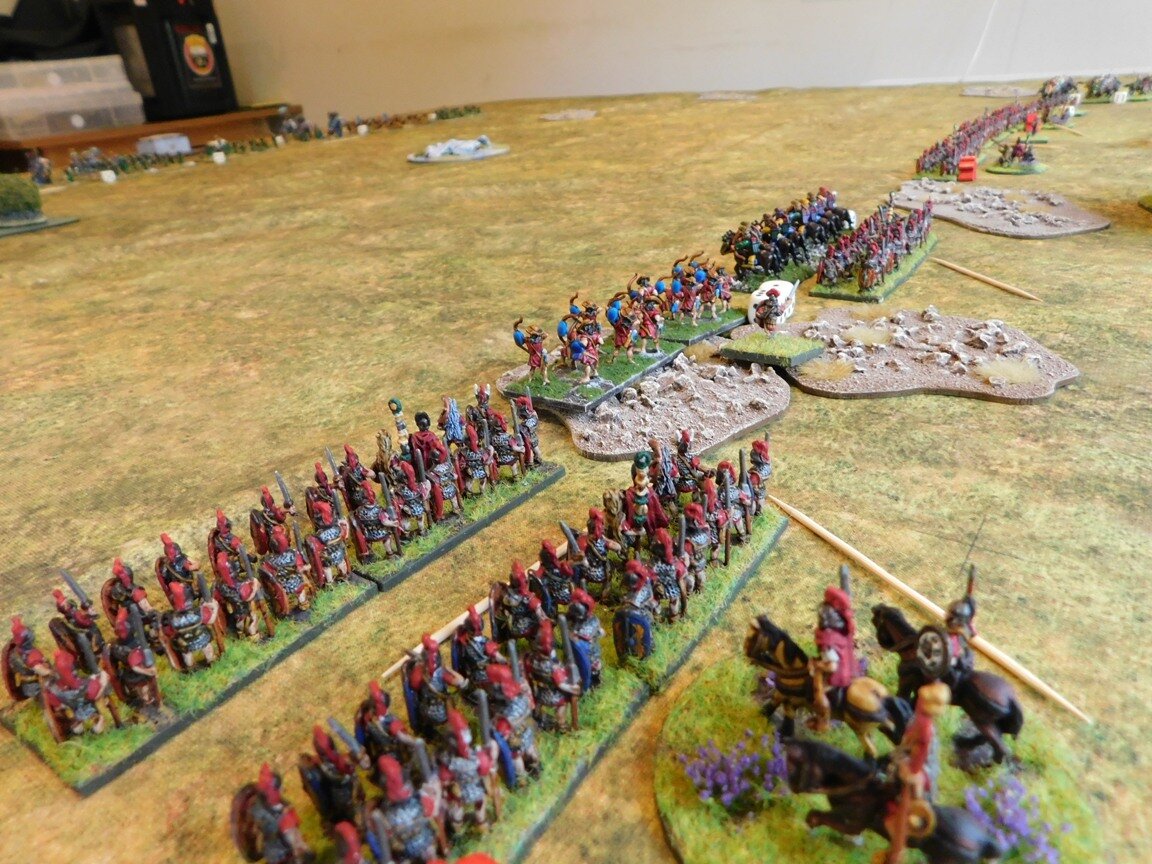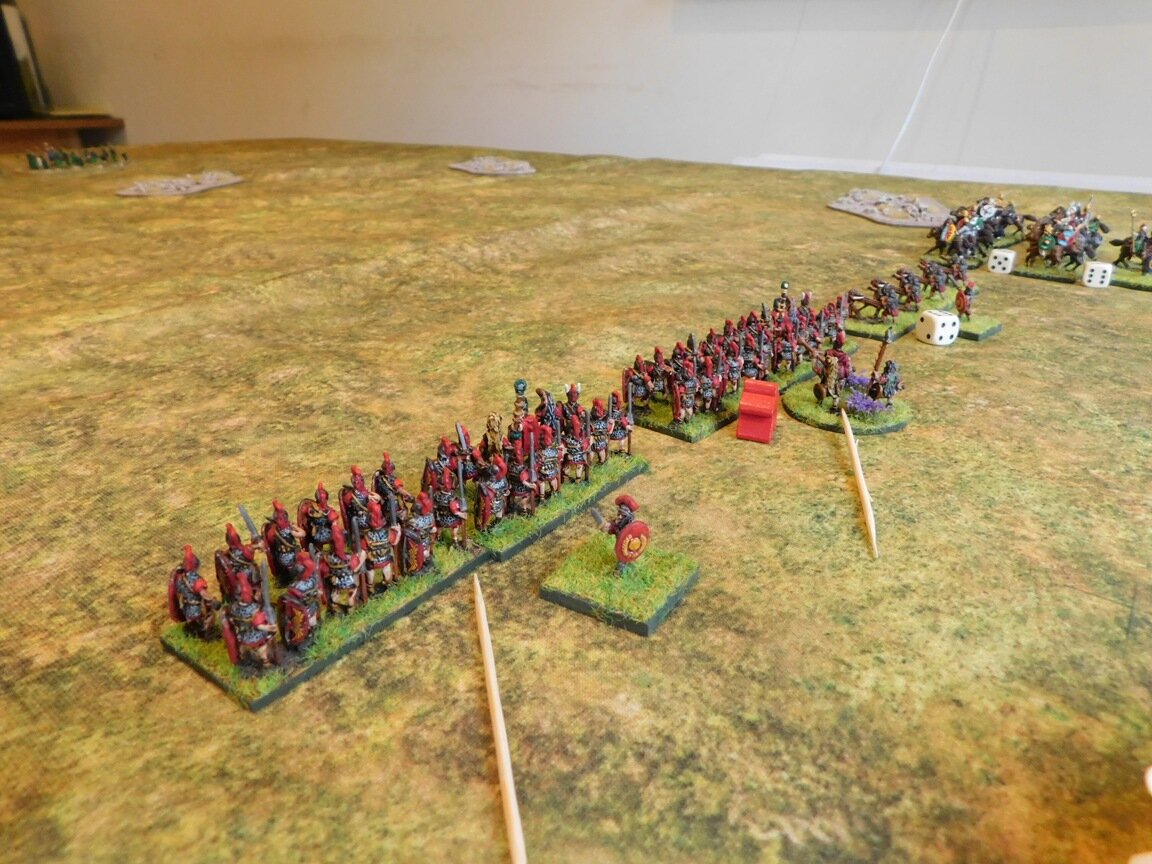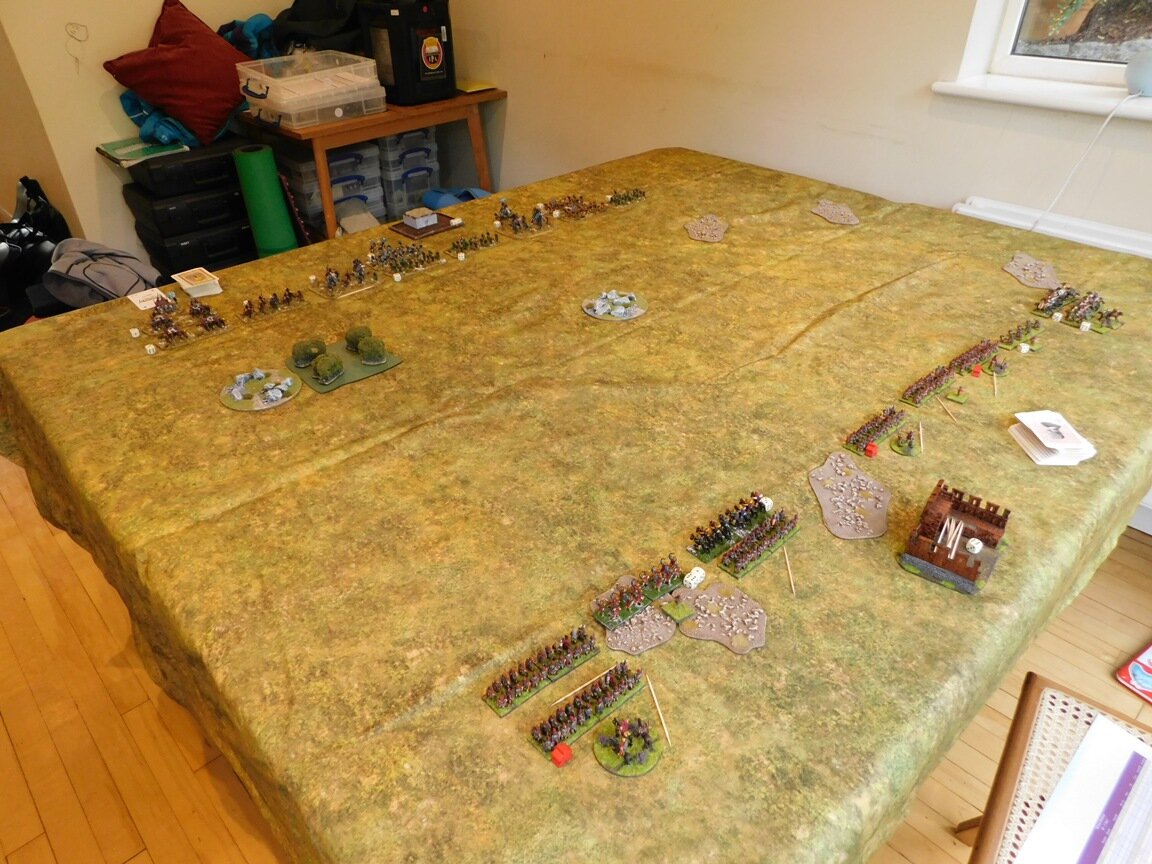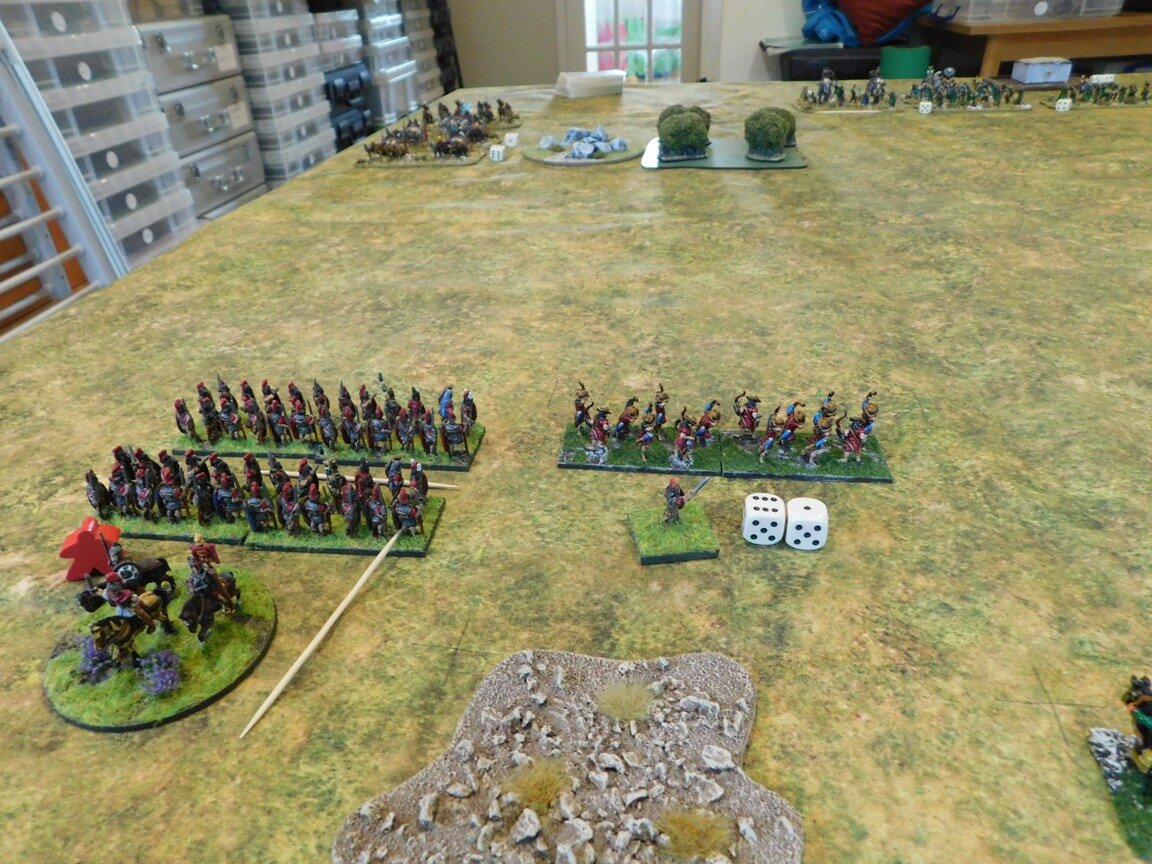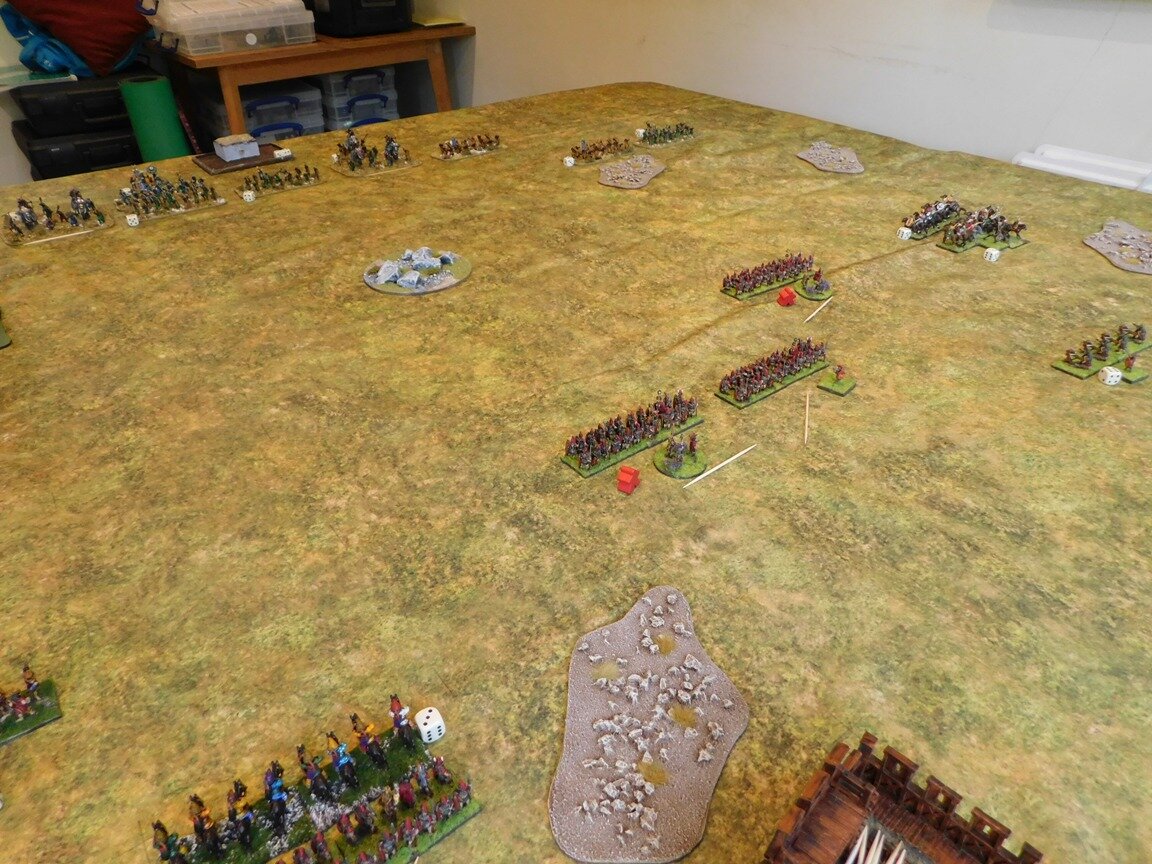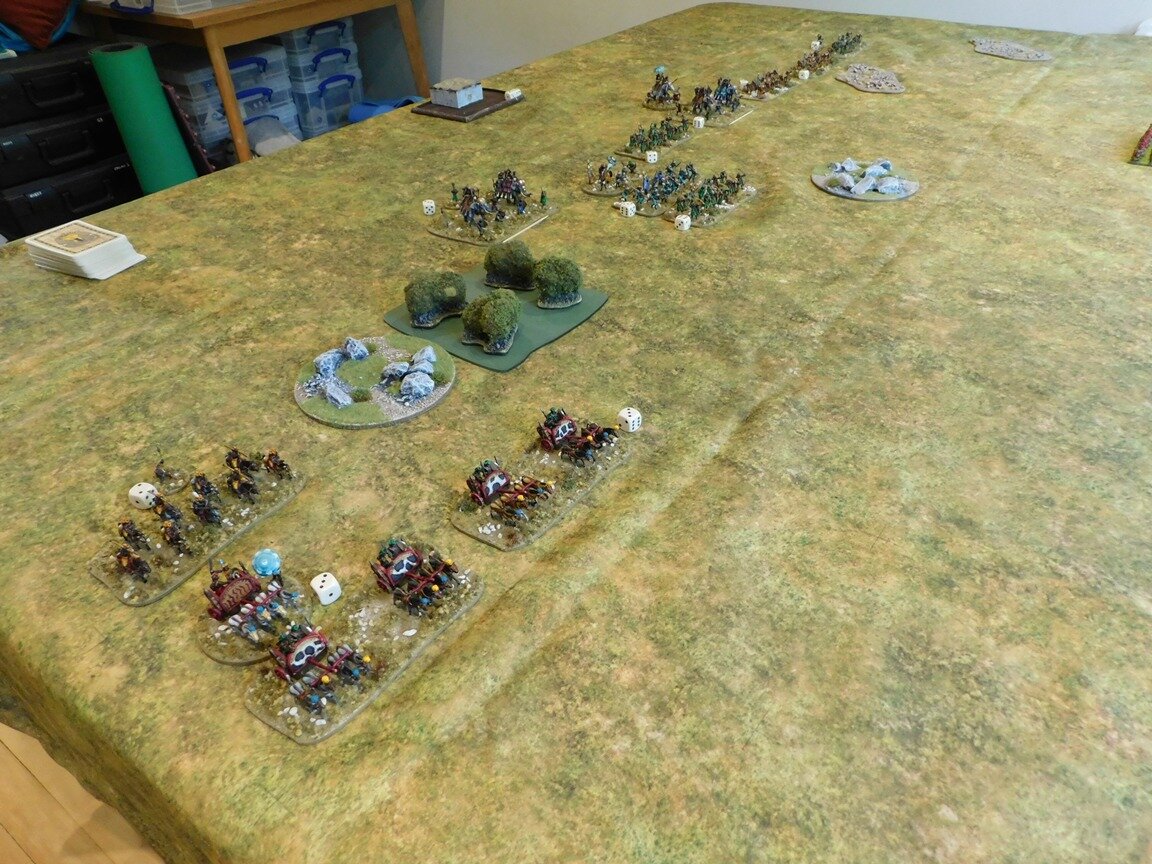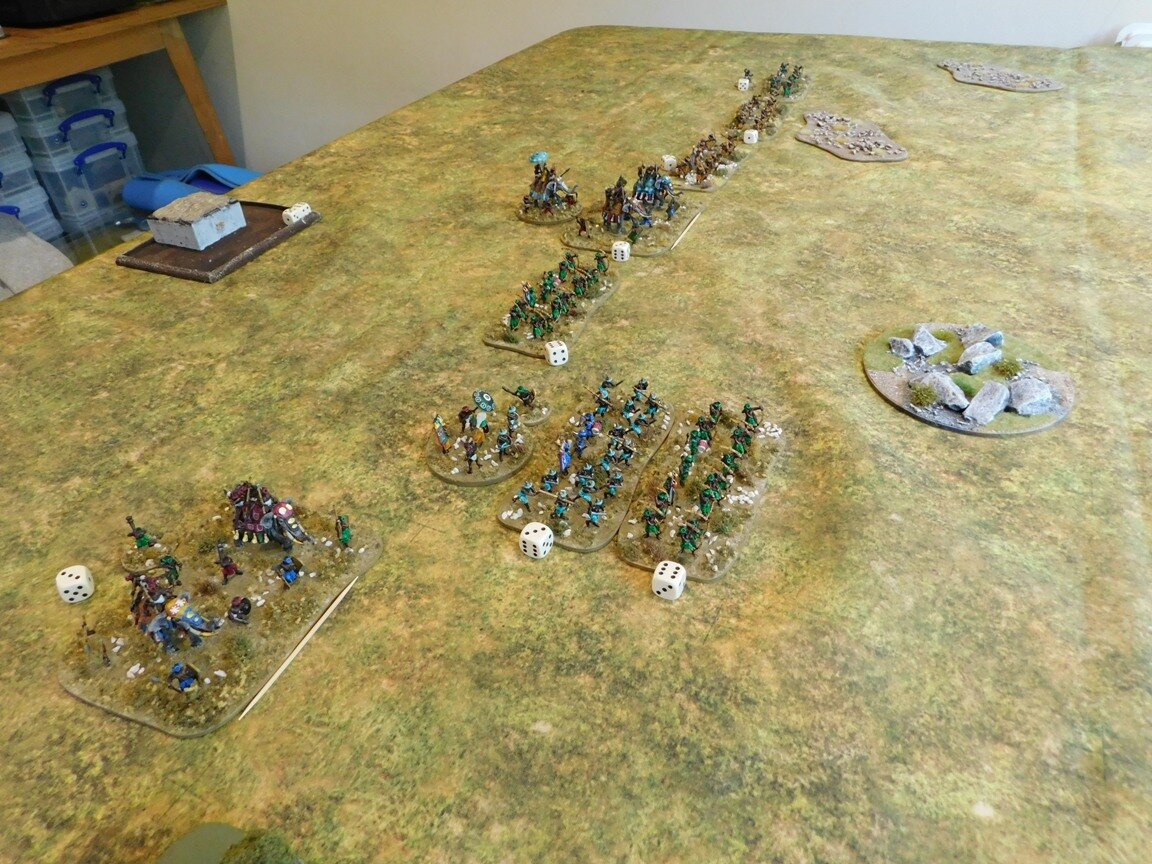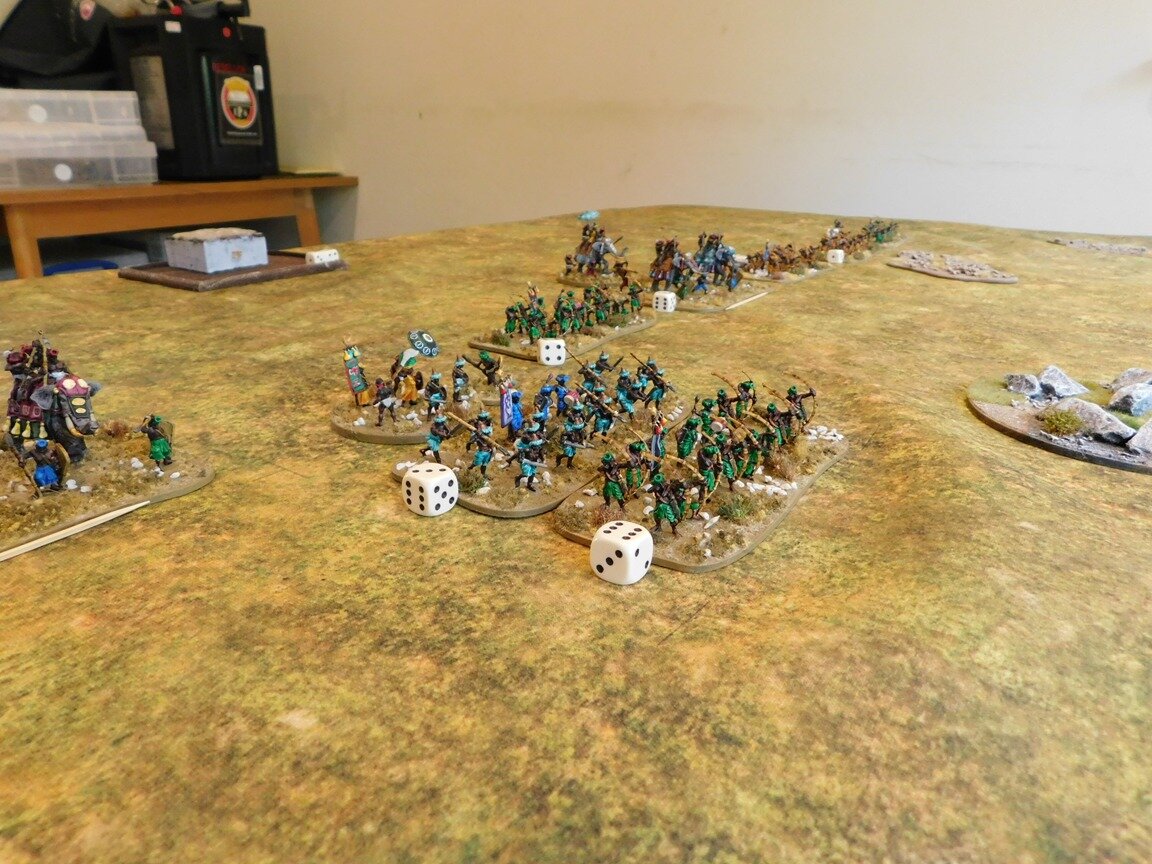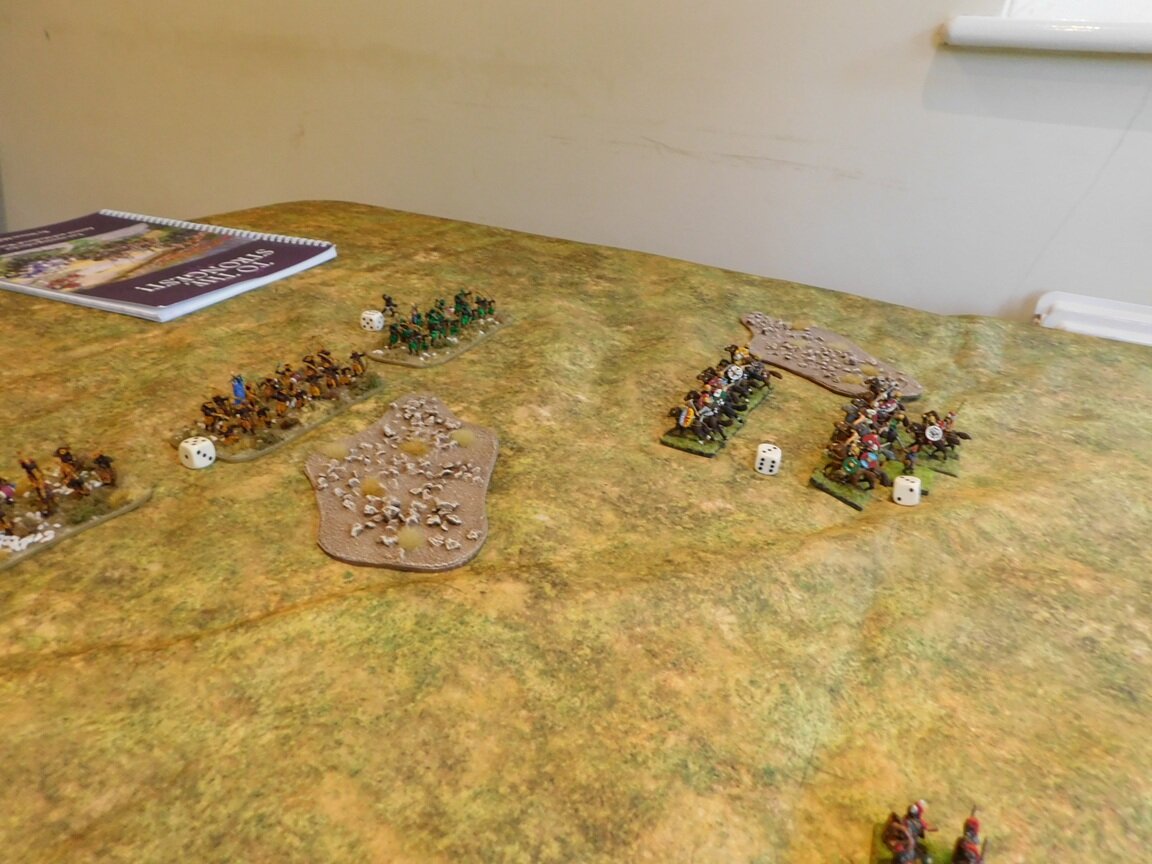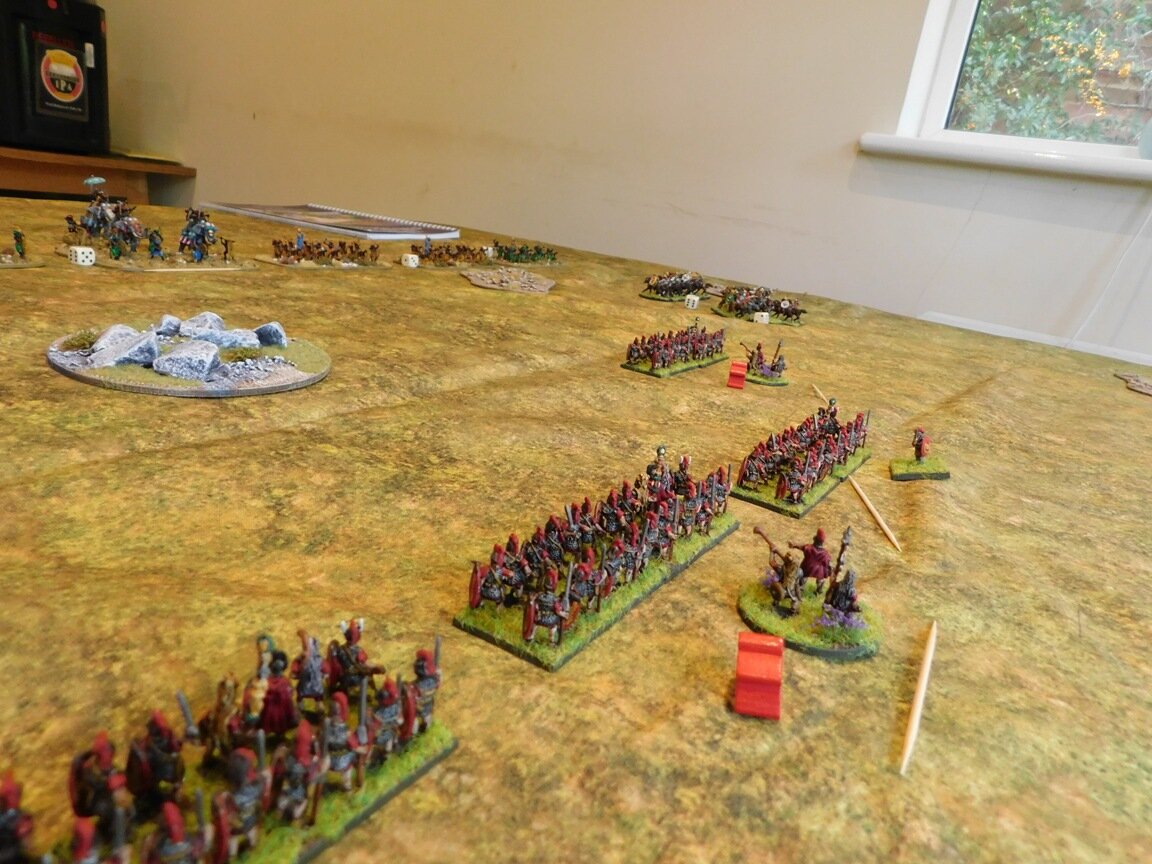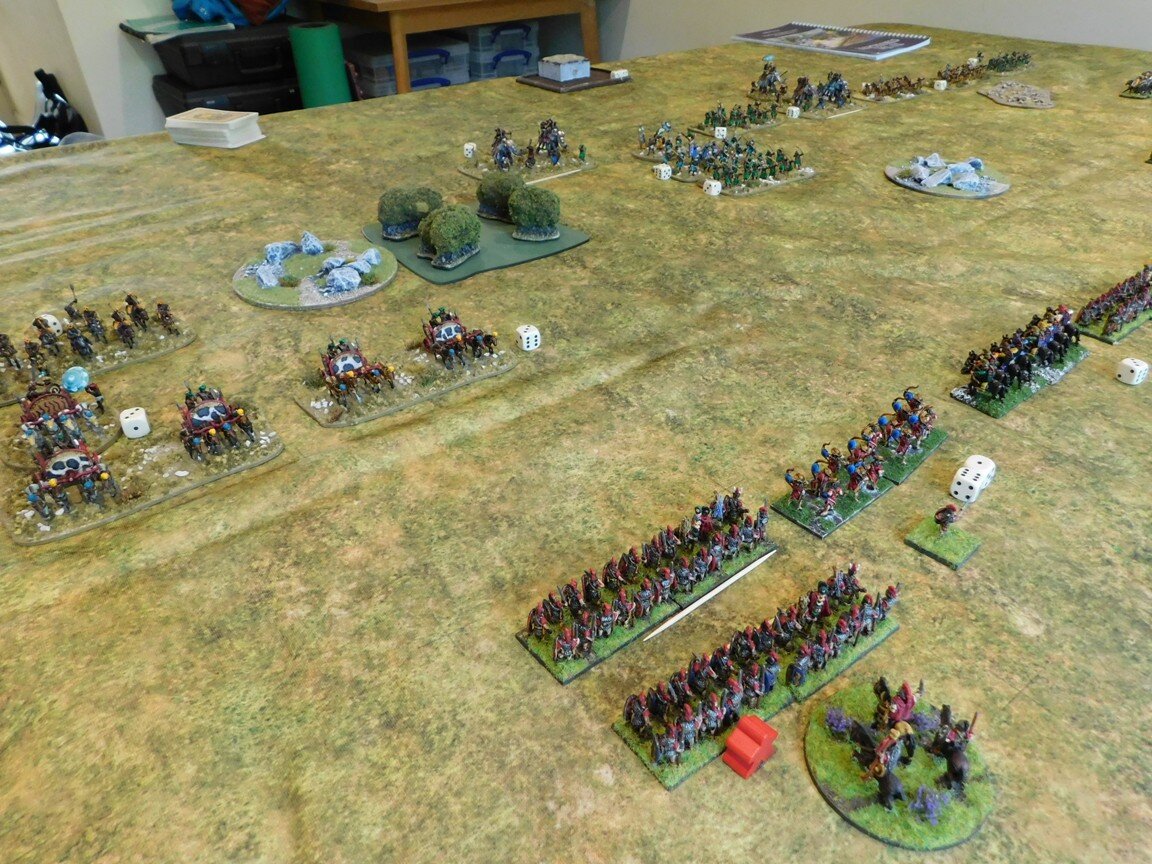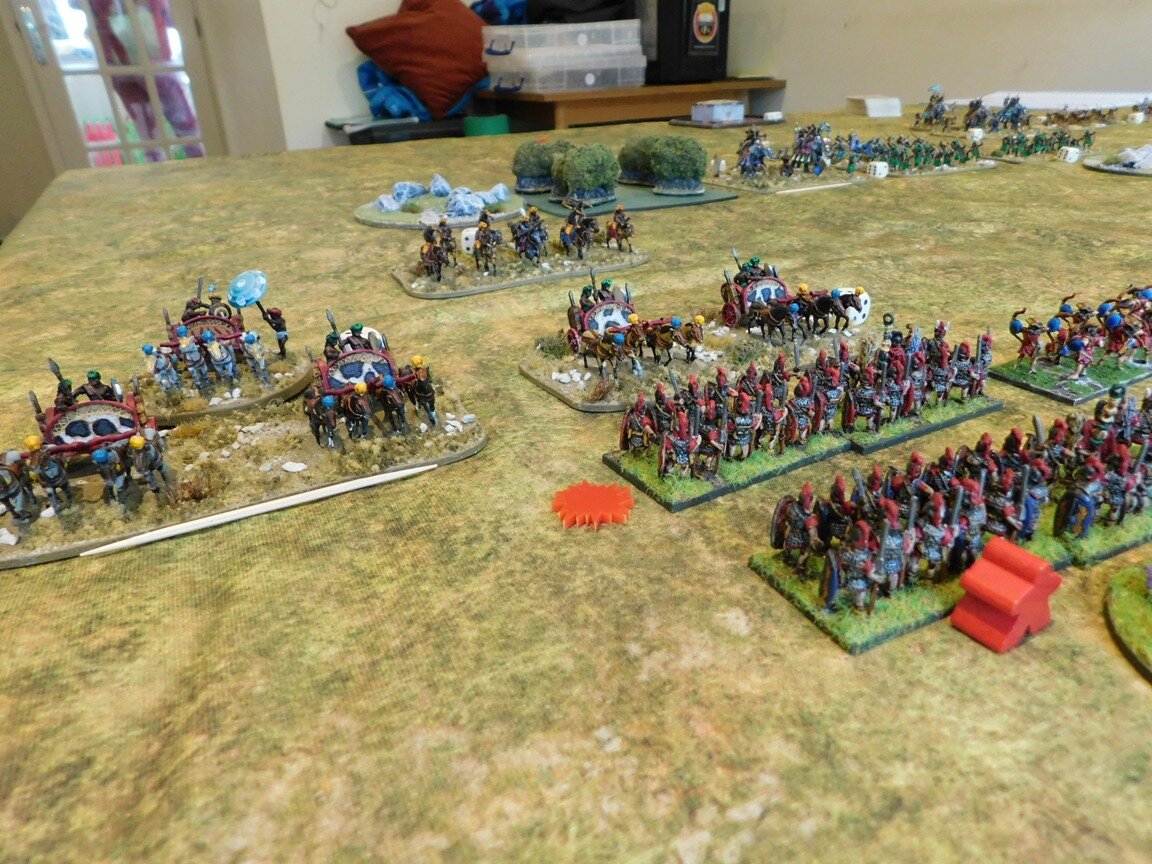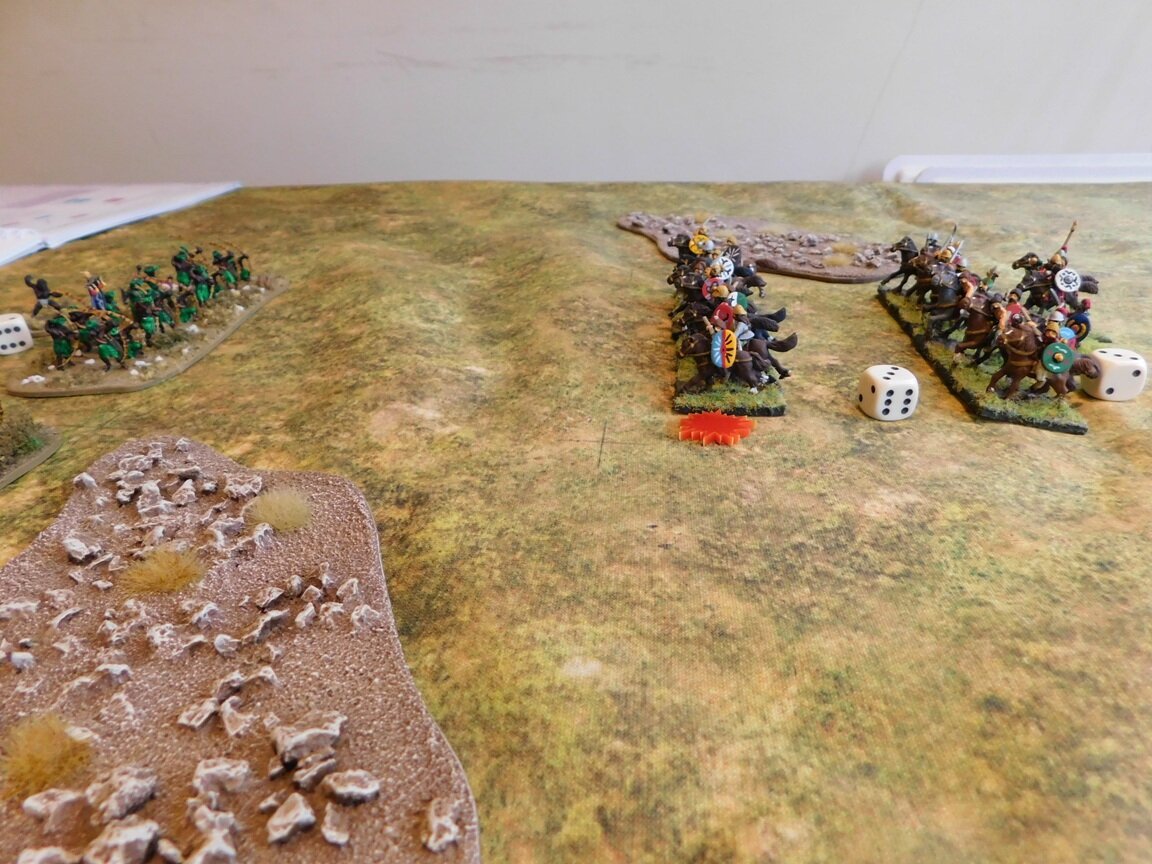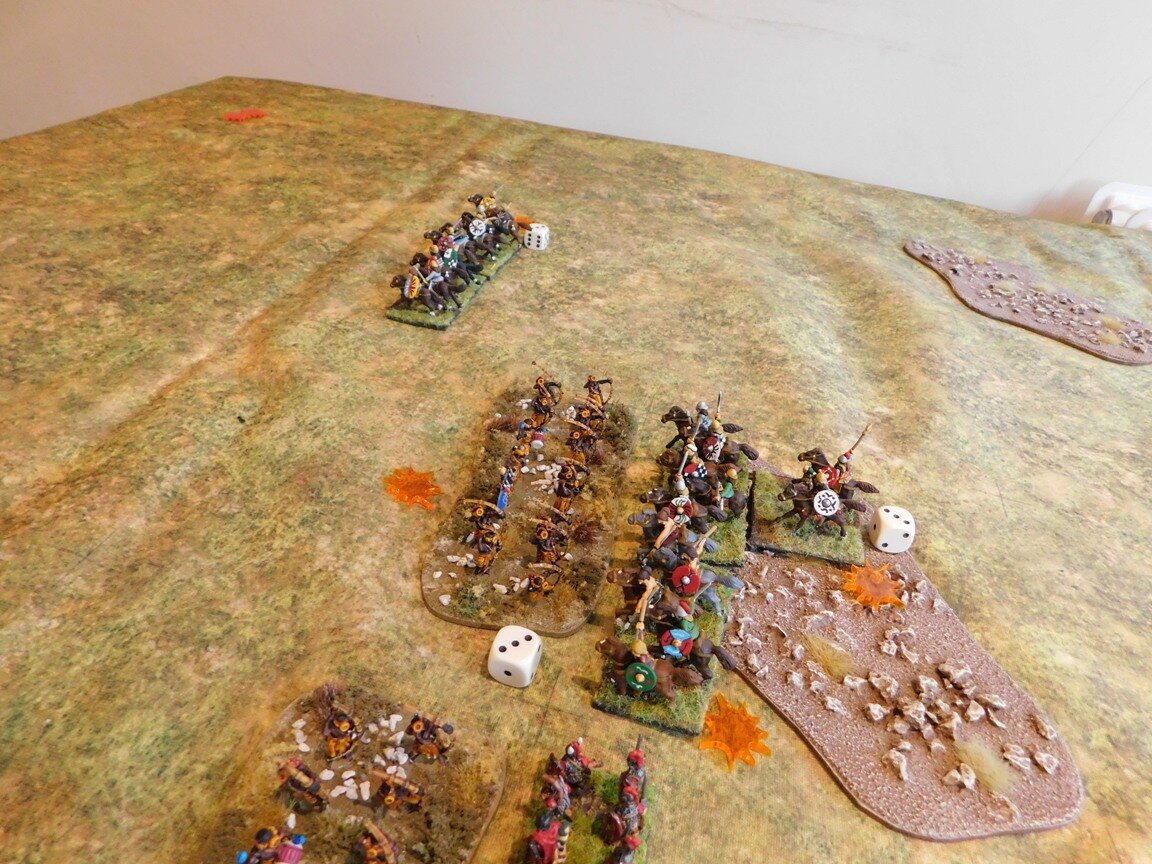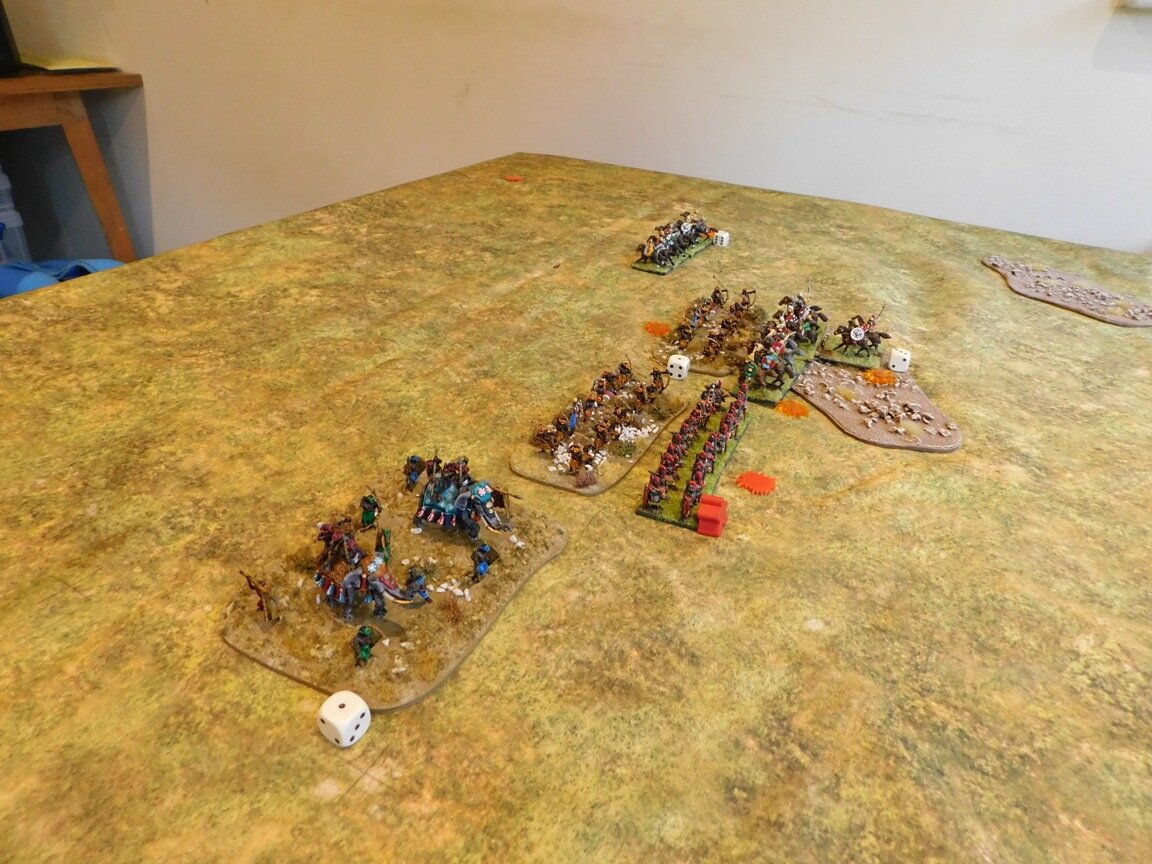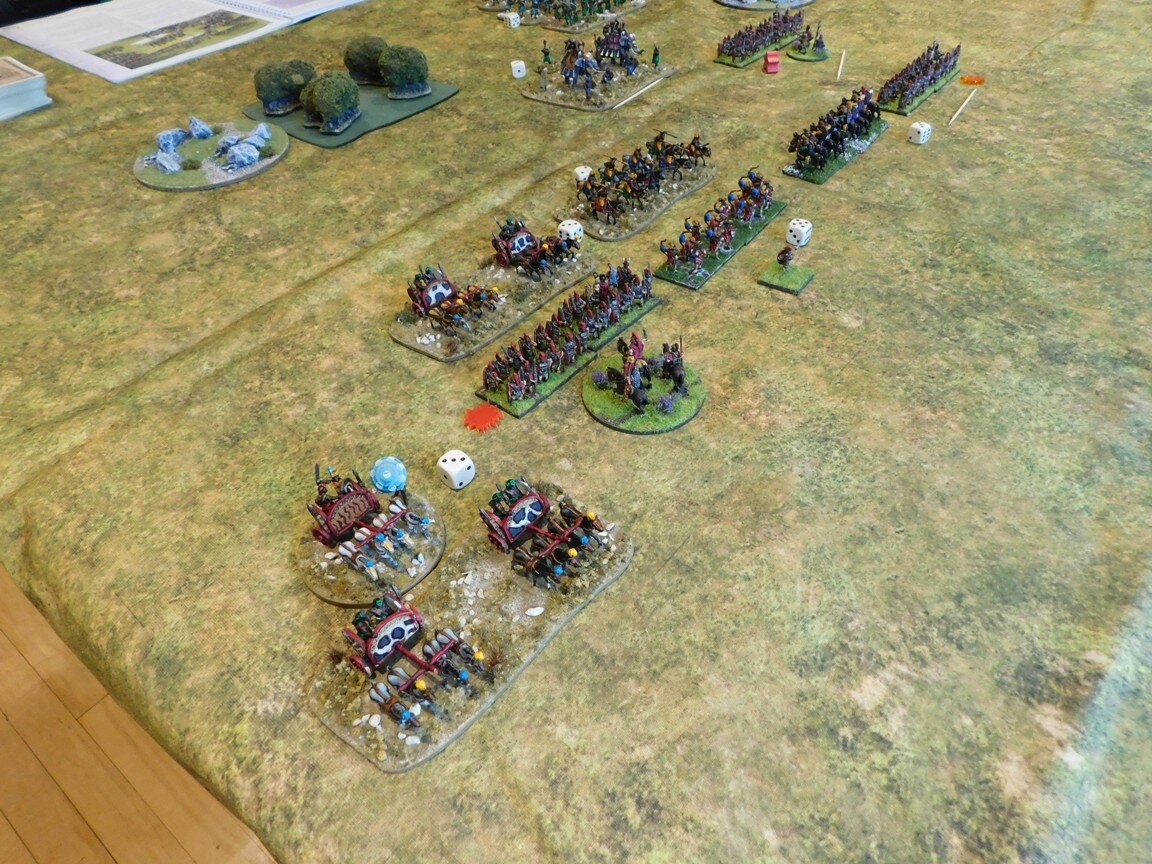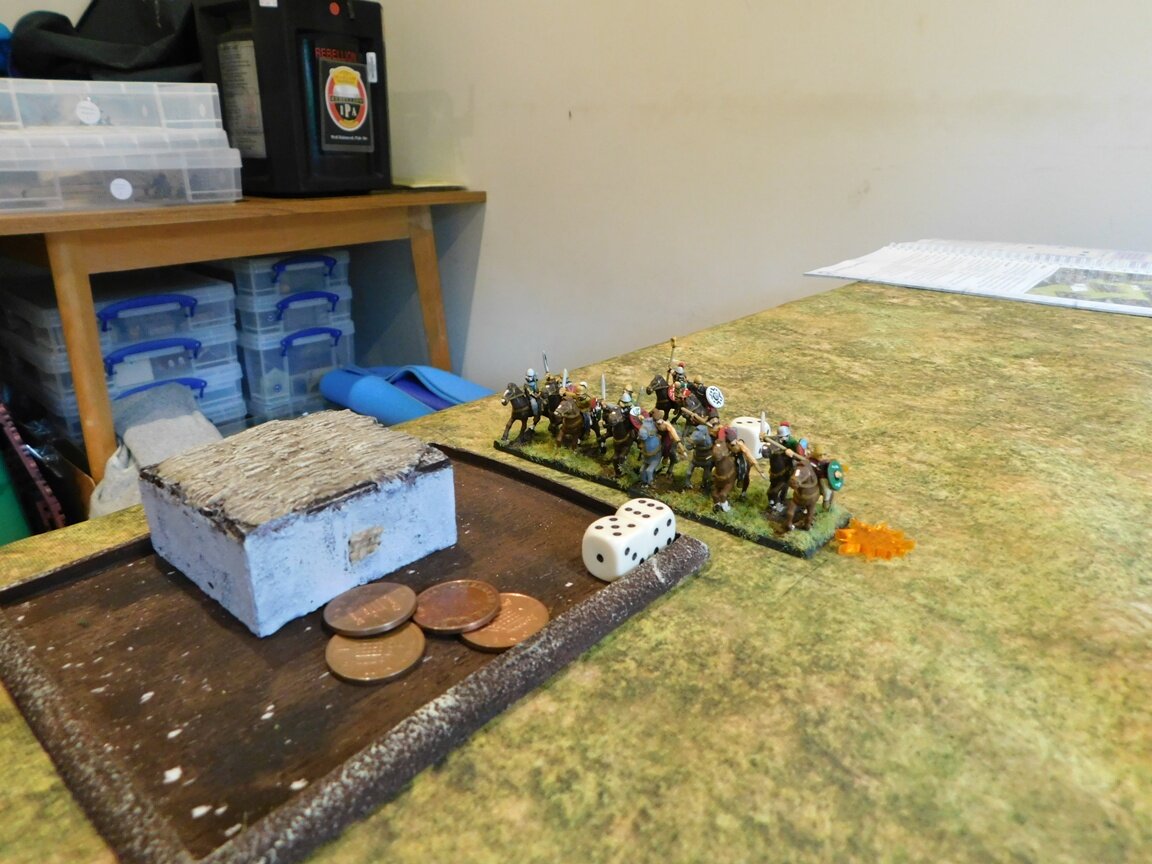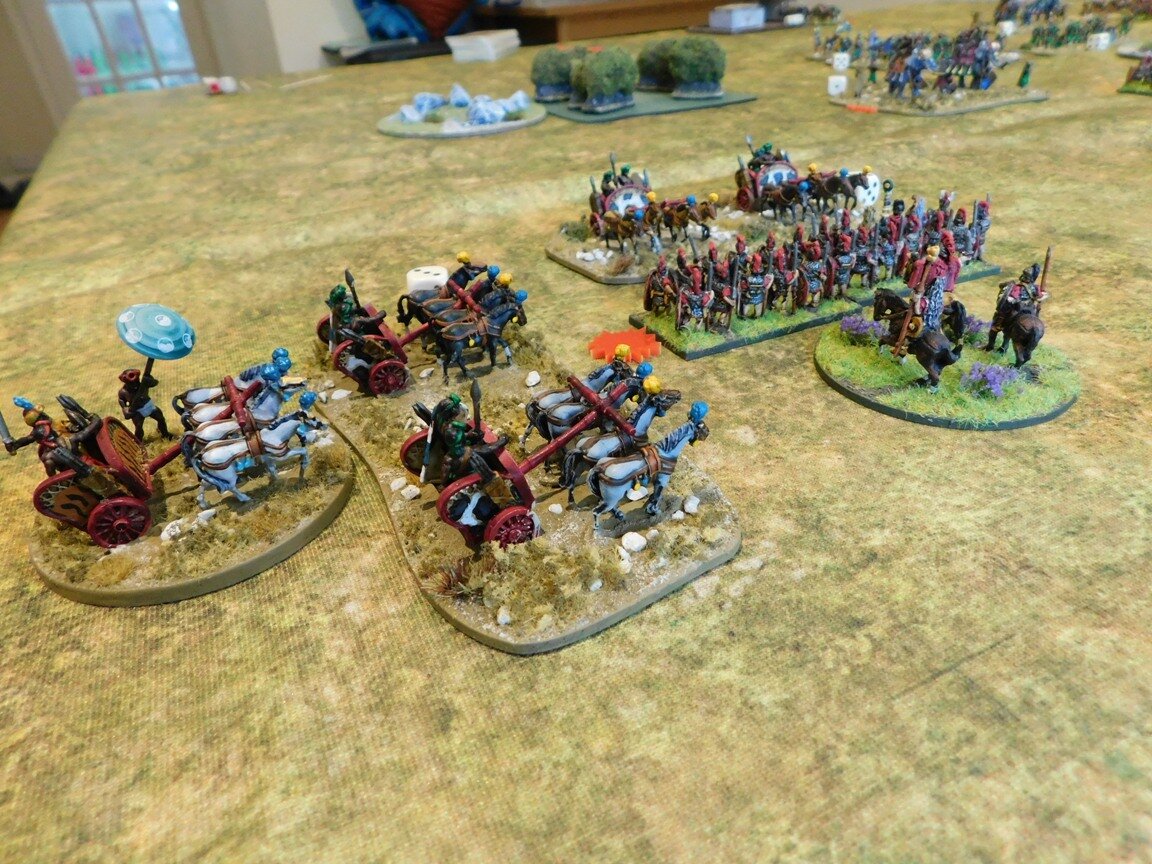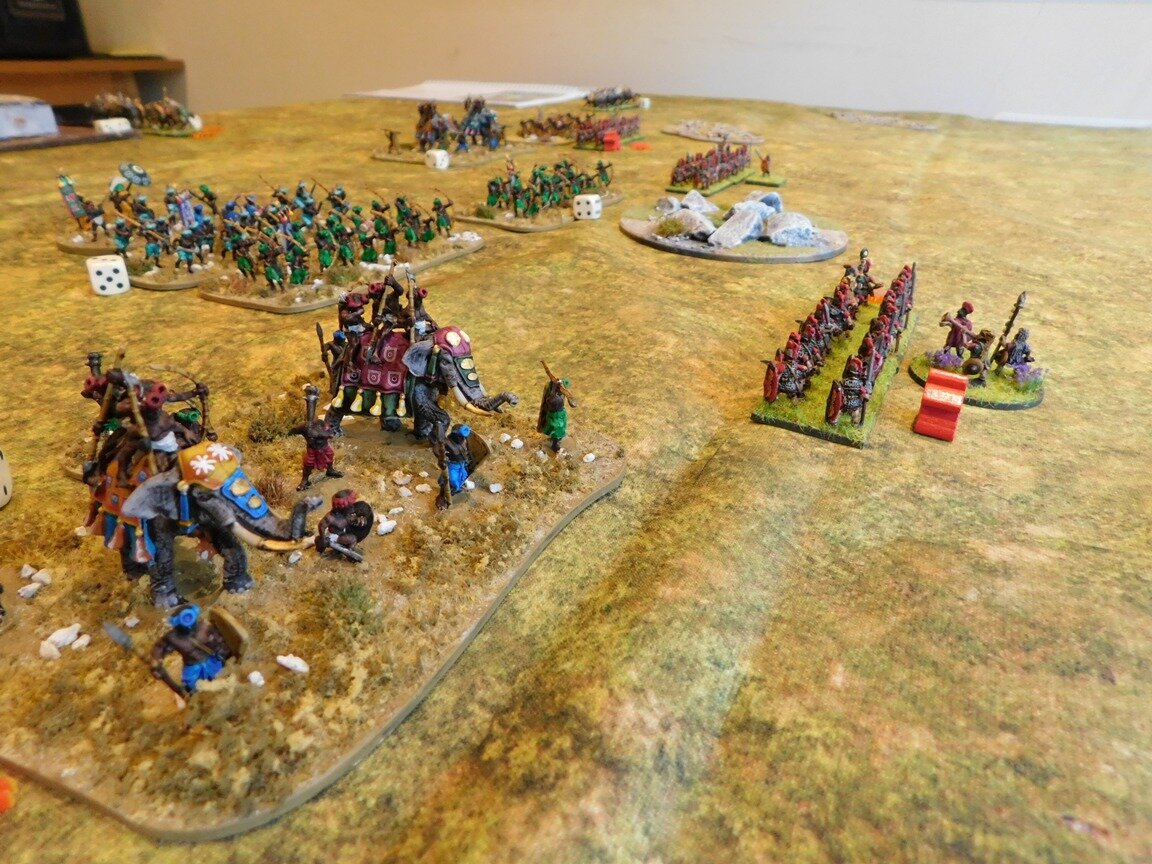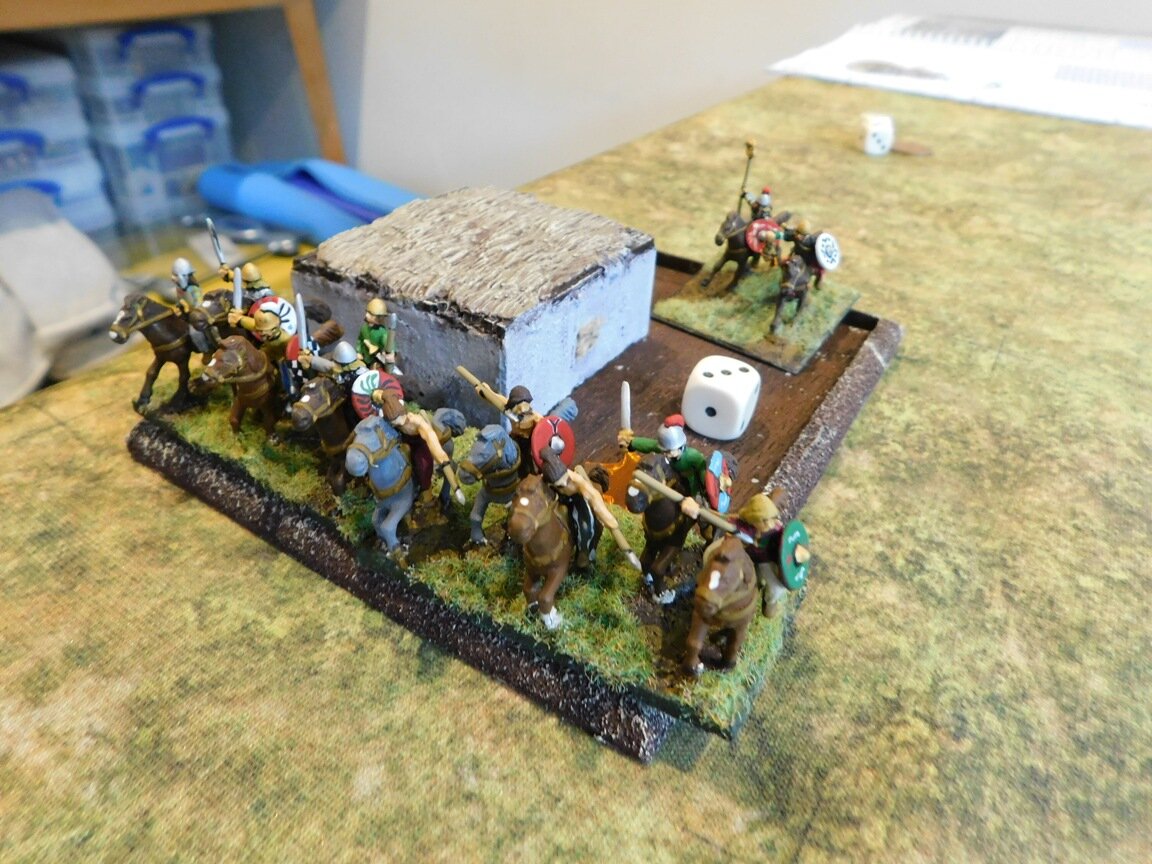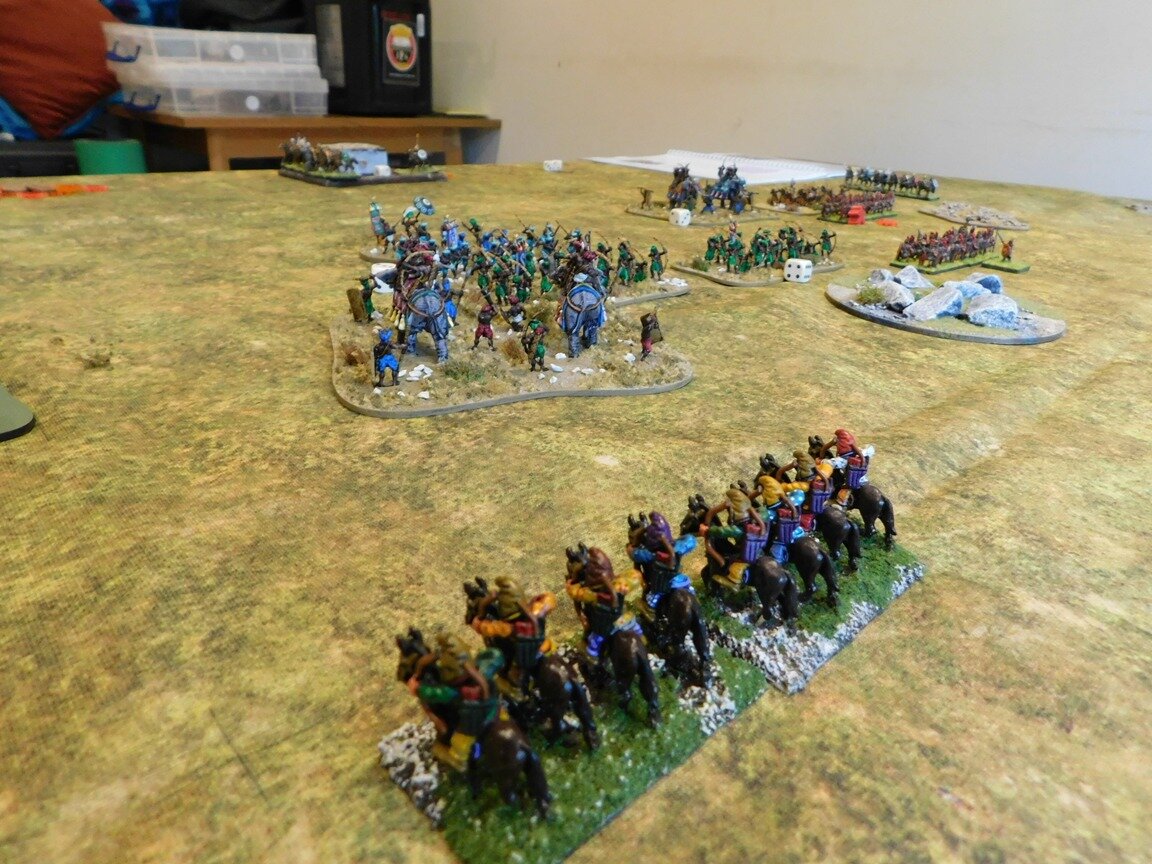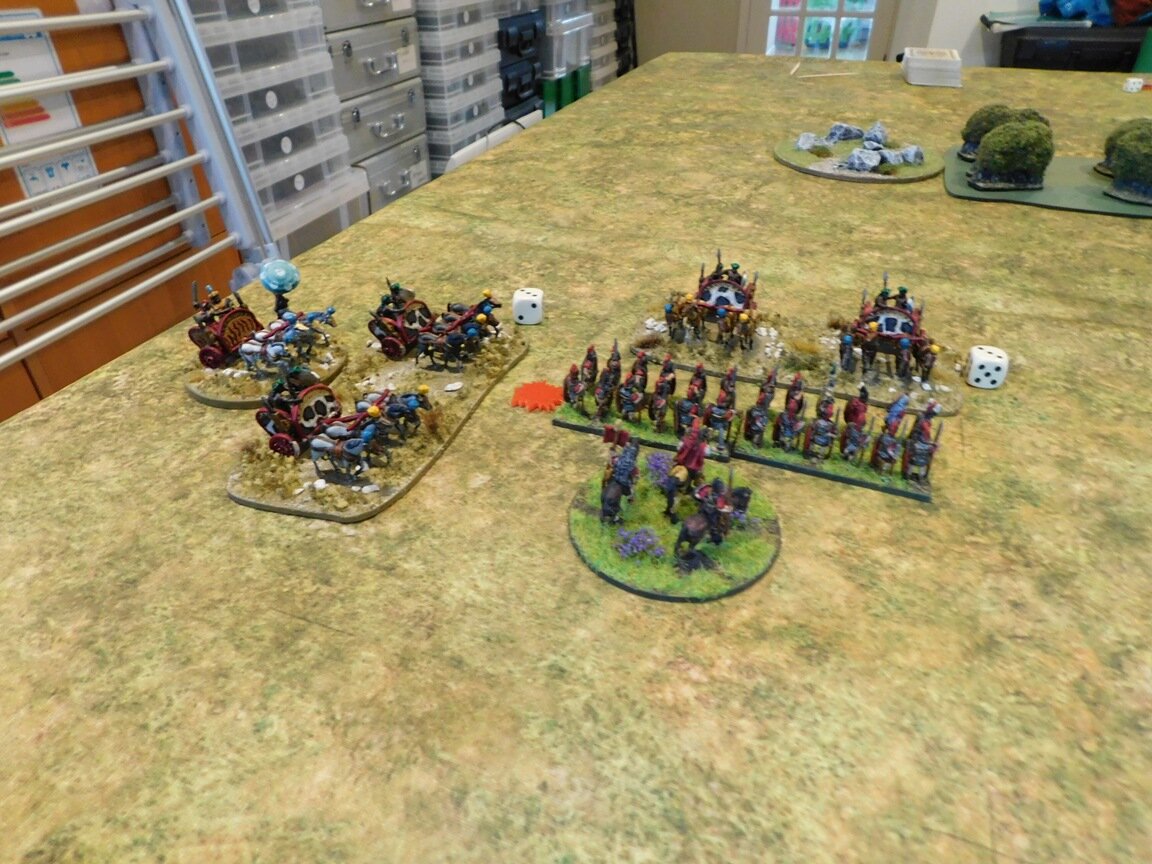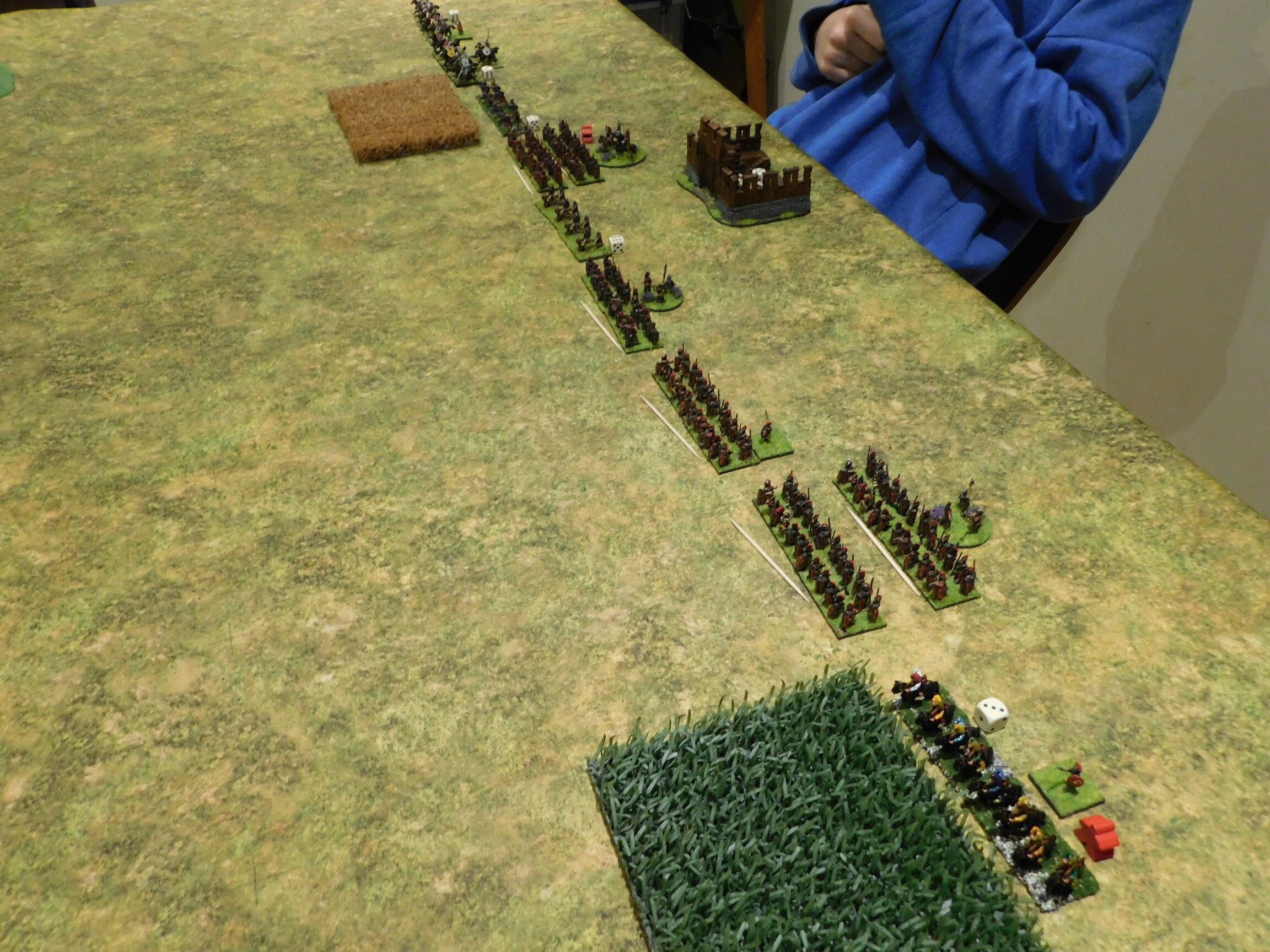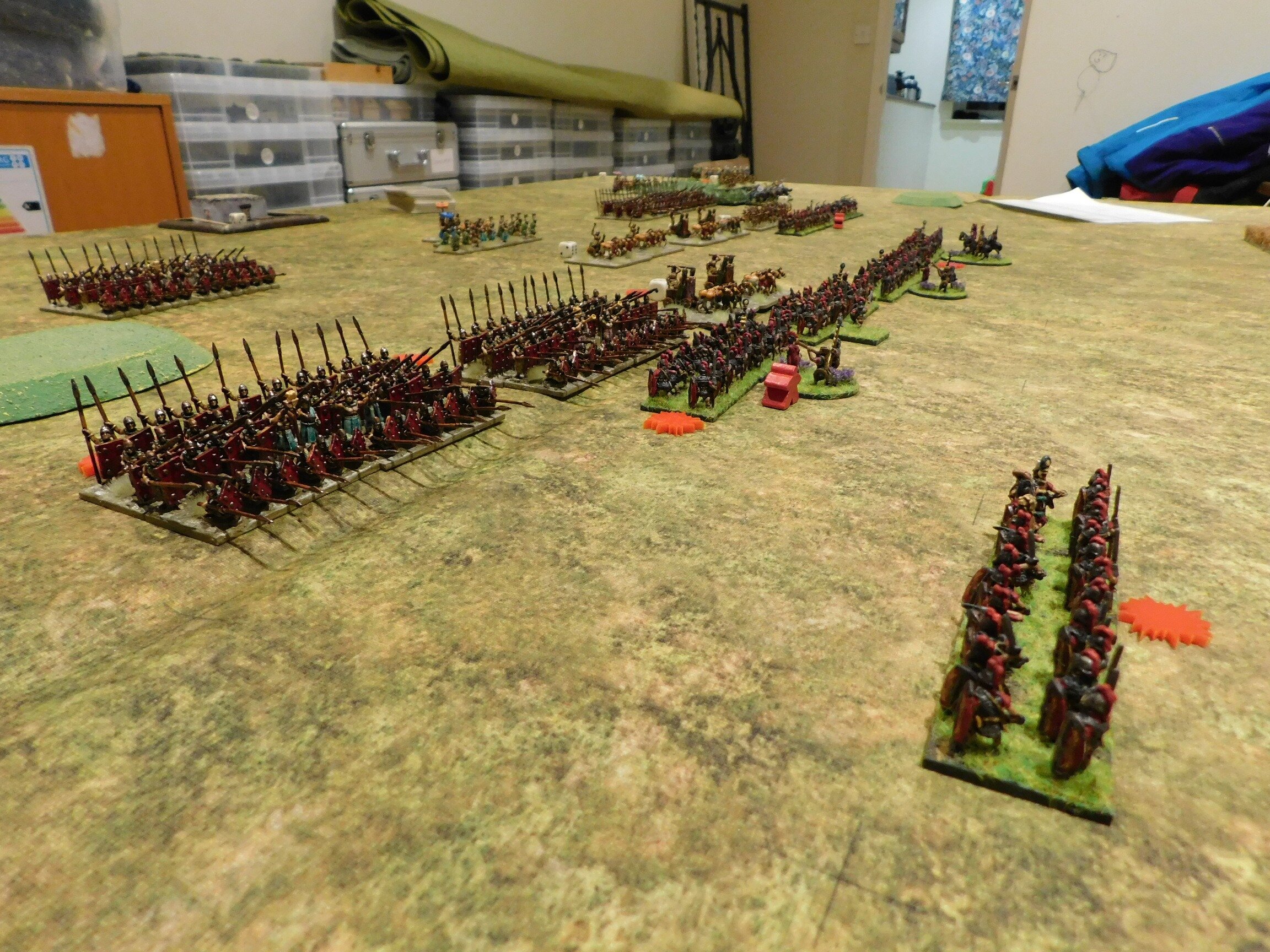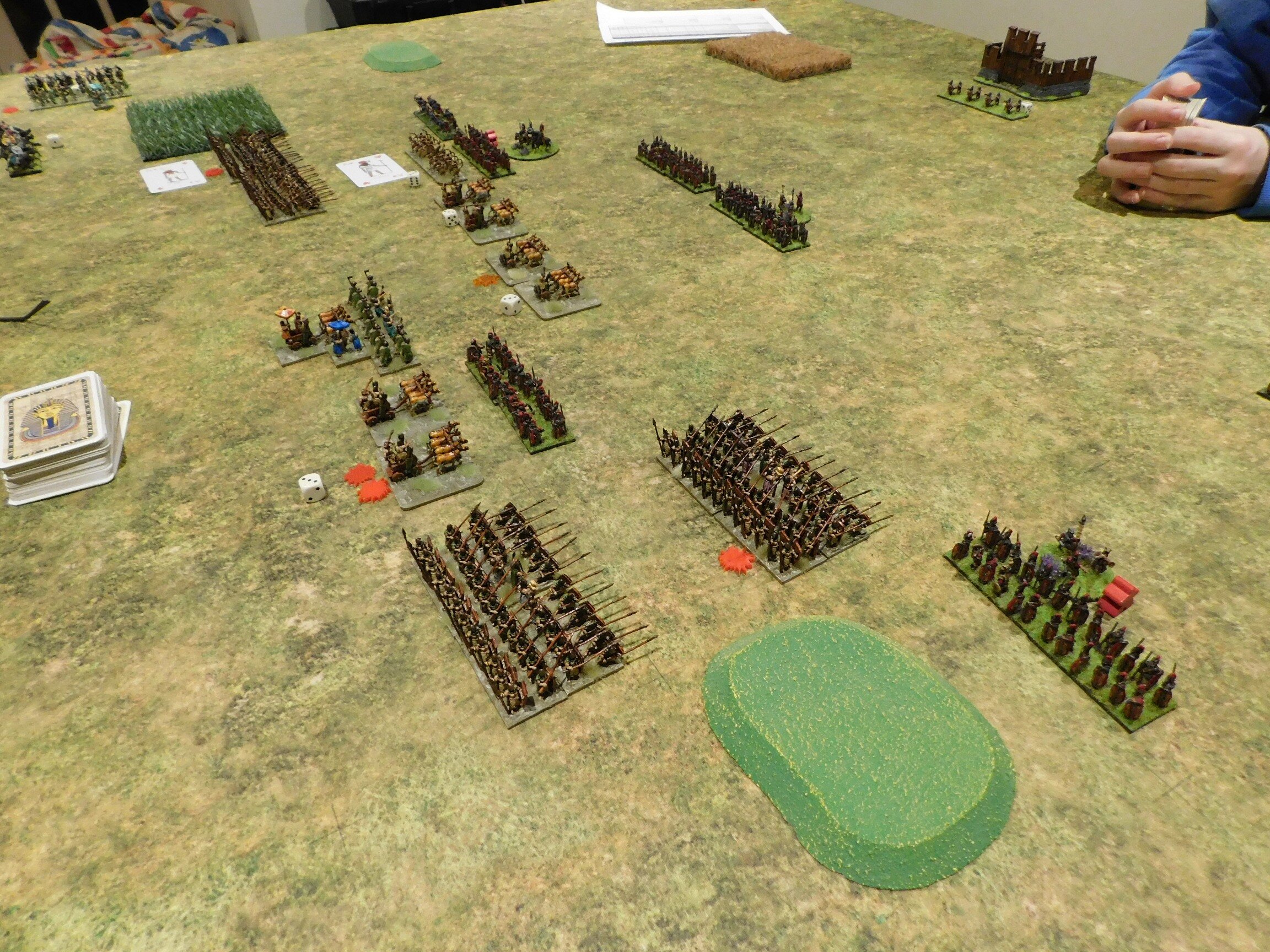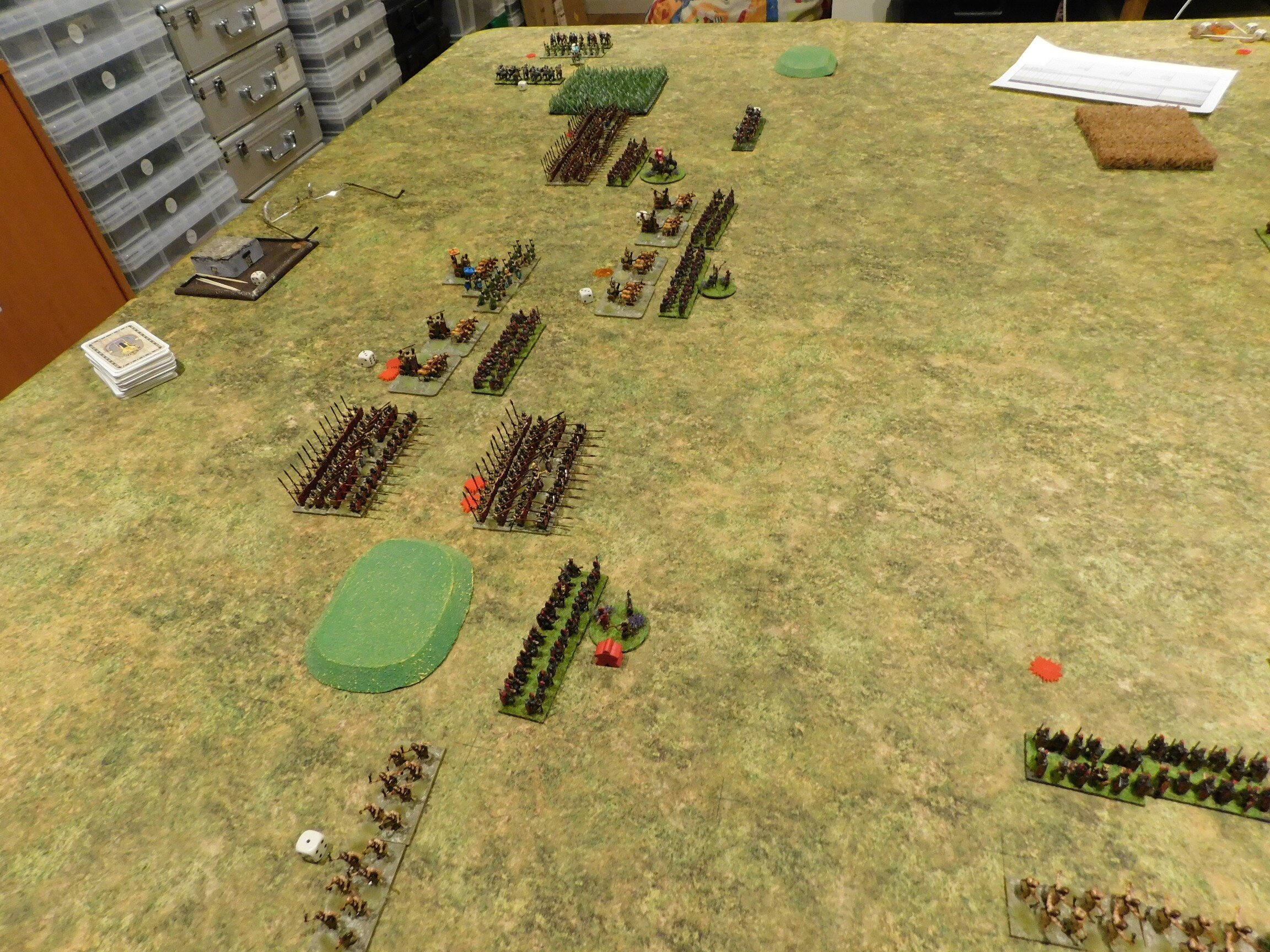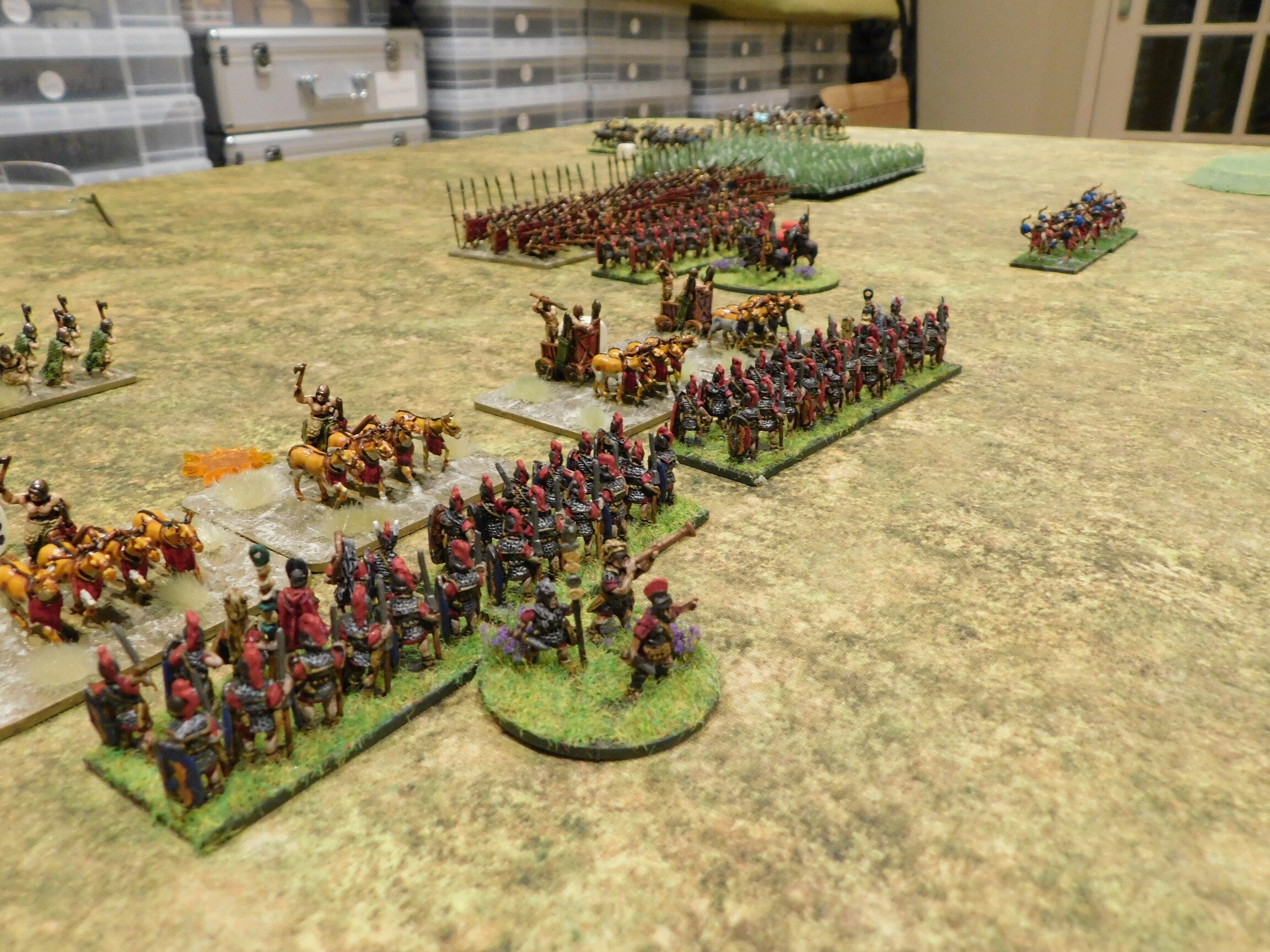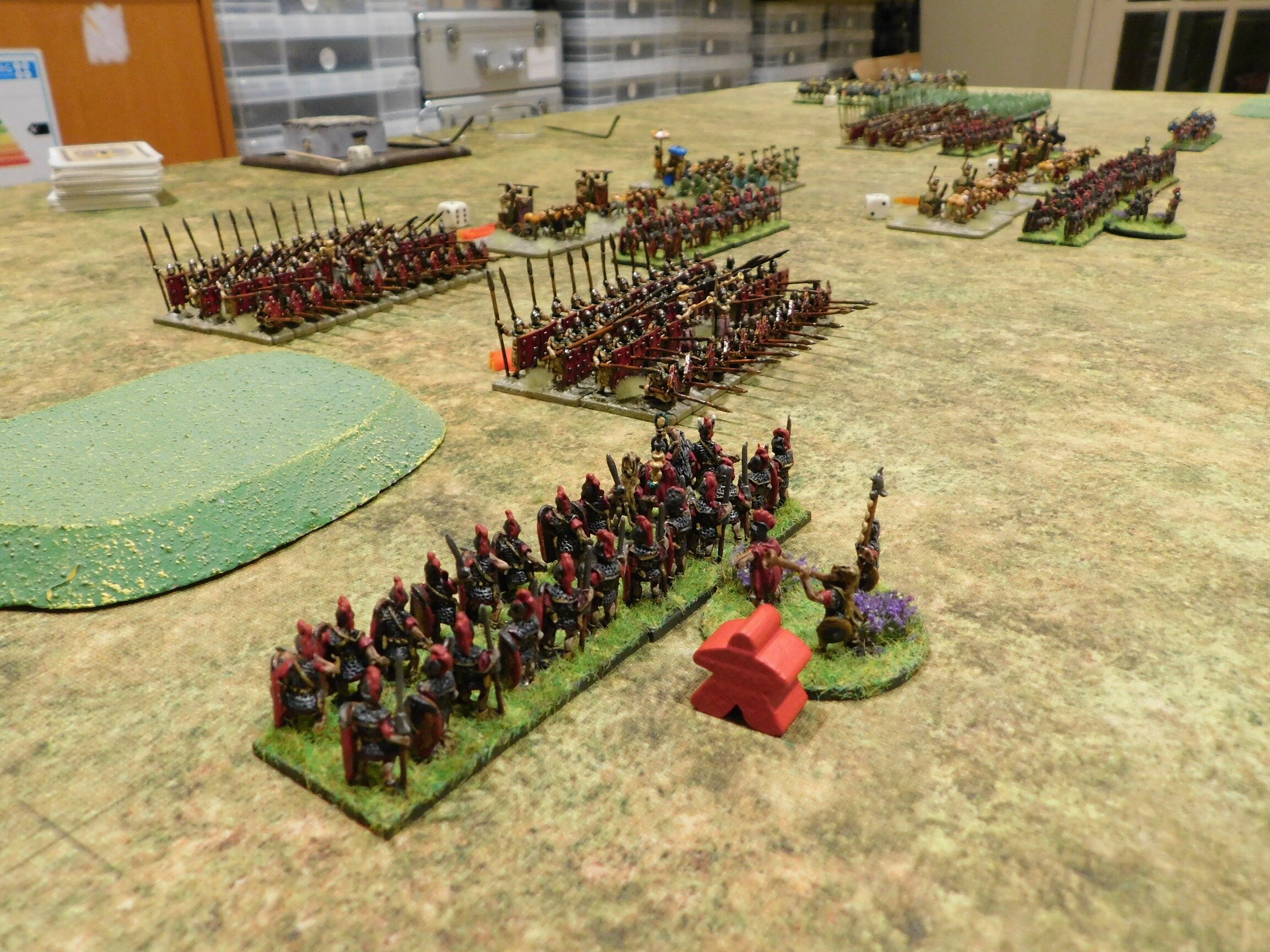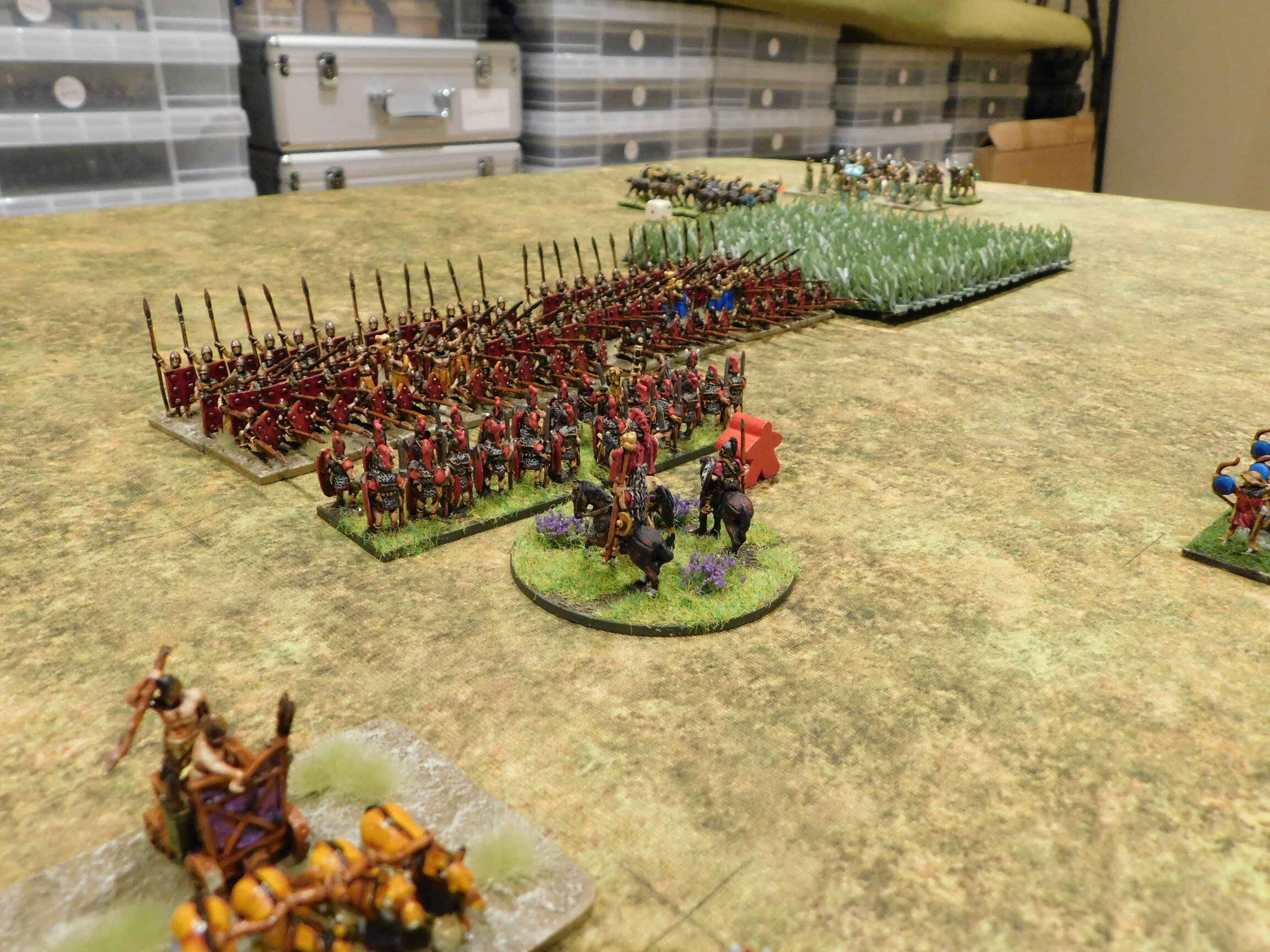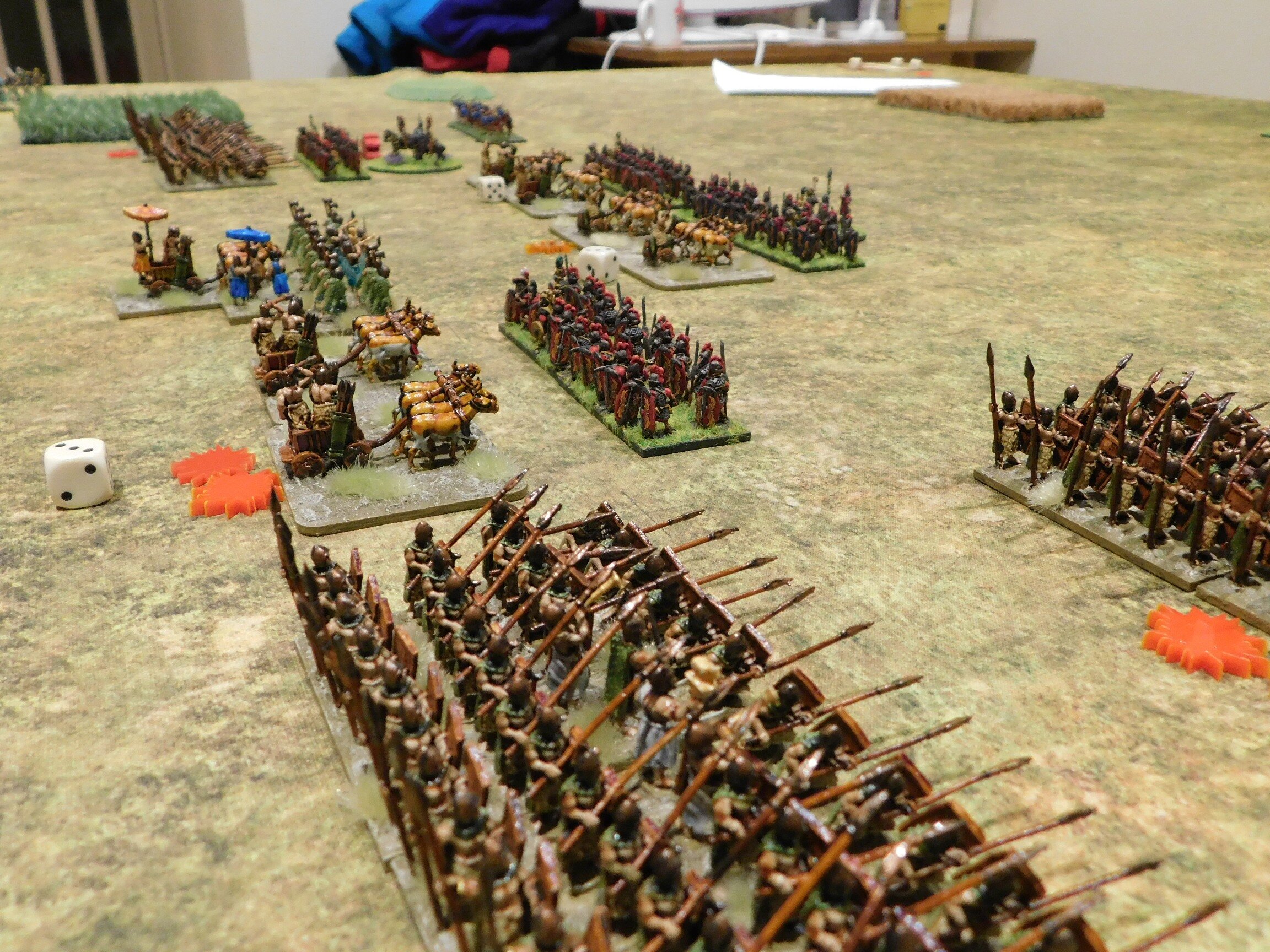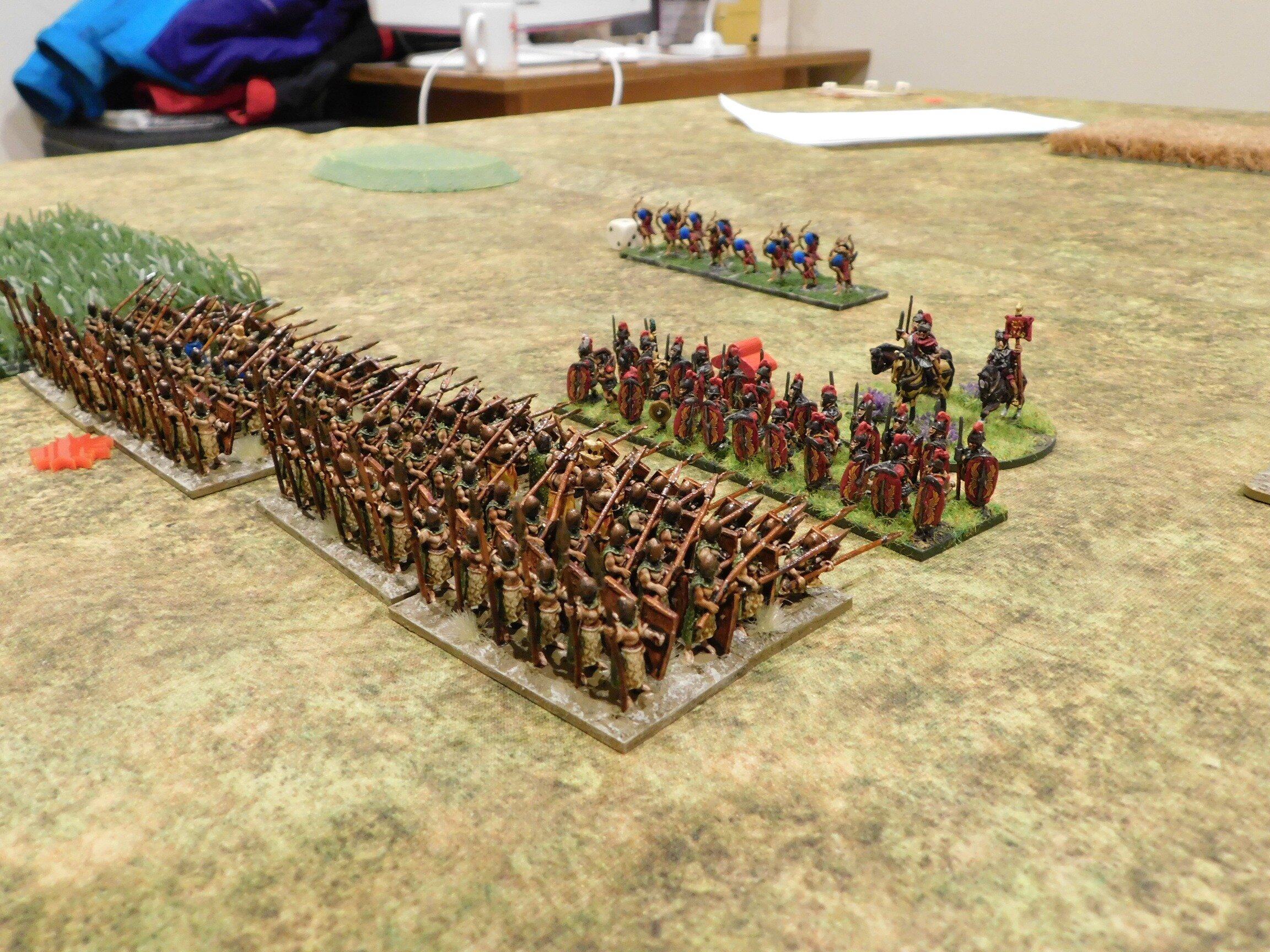FK&P AAR: Return to Cookham Moor
/After last week’s defeat, there was nothing for it but to play the next game in the campaign: Cookham Moor.
The Moor is a fun battle where both sides start the game facing each other across a stretch of open land:
My right flank consisted of a brigade of Dutch horse. They are good, solid troops, but the Royalists in front of them were in Swedish formation: more agile and, most importantly, able to counter-charge. That has led to defeat in previous battles, so I decided to try something new: I would advance up to the hedgerow and wait for them to come to me. The Commanded Shot from the nearest infantry brigade would move slightly forward into the woods, threatening the flank of any Royalist advance. At the same time, the guns would deploy and the Scots on my left flank would move up to the hedgerow in front of them. For once, the cards fell my way:
The Royalists advanced forward across their line, and soon the battlefield looked like this:
The Royalists then moved their central infantry to their right to face up against the Scots, uncovering the cavalry that had moved over from the right. This cavalry then charged straight forward: right at the Parliamentarian guns just over the bridge!
This was a disaster, as the Royalist cavalry swept the guns from the field, then heading off table in pursuit. There was now a massive hole in my line.
A general melee then broke out across the entire line. My Scottish pikemen did well, forcing the Royalist Commanded Shot to intervene; but my Highlanders, as usual, proved ineffectually weak.
With the infantry locked into combat, the focus changed to the cavalry clash on the right.
Here, my decision to hold the hedgerow proved a very good one, as after a couple of turns all his cavalry was dispersed.
This made up for the disaster in my centre, but both sides were now looking very battered indeed: so battered, in fact, that whichever side next lost a unit would lose the game.
If that was not exciting enough, on my far right the Royalist CinC at the head of his small-unit bodyguard cuirassiers was faced off against my CinC at the head of some Dutch horse!
It all came down to this combat. Could I do the single hit I needed to break the bodyguard and win the game?
Well, you can see from the picture above that I didn’t manage to hit the enemy in my turn. No matter, I thought, he needs two hits on me to break me.
Unbelievably, however, the two hits were done, my cavalry broke, leaving Sir Christopher all on his tod! I had lost the combat and lost the battle!
Aftermath
Phew! What a game!
I had managed to retrieve the situation in the centre and everything had all come down to one final combat that I had really lost on the luck of the cards…but at least I had played the Dutch horse well!











